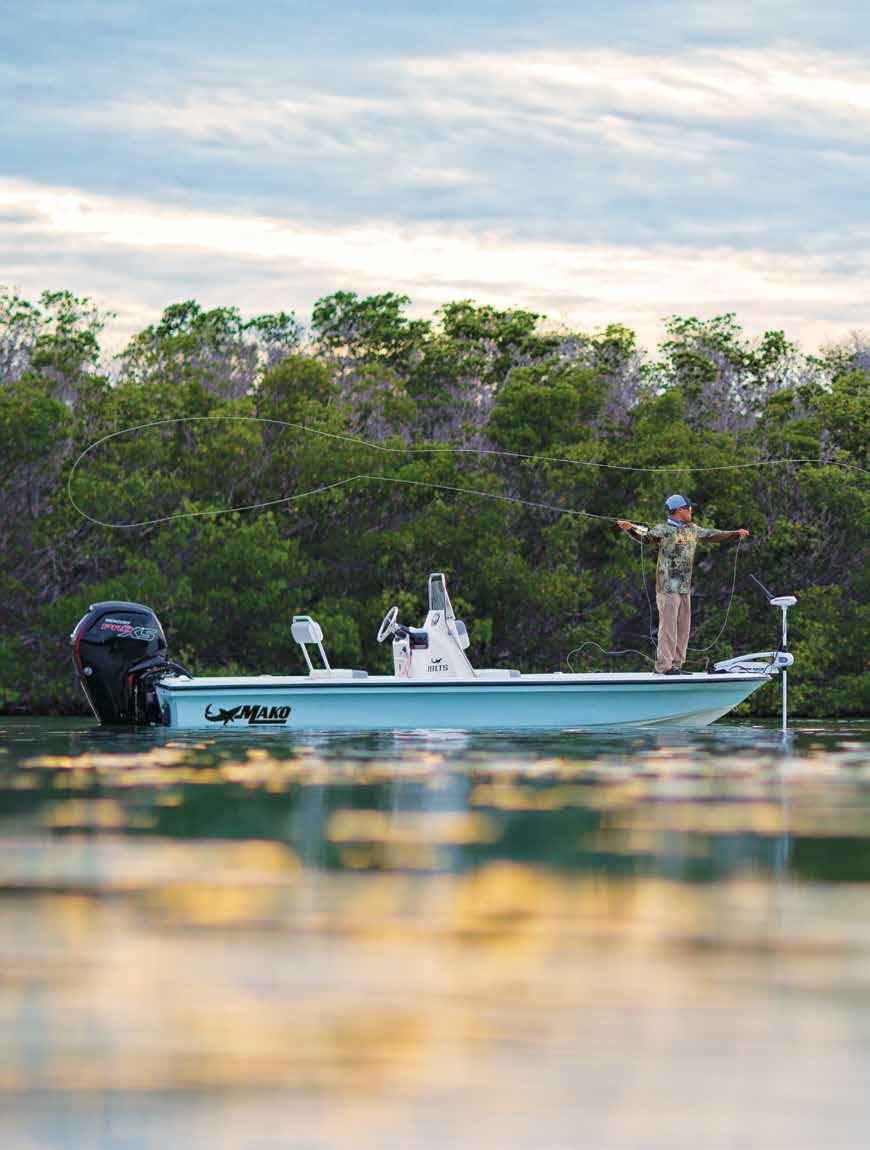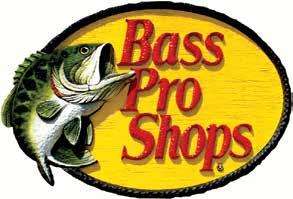REDFISH ON DRUGS



The Jose PRO was named in honor of the legendary Waterman and larger-than-life personality Jose Wejebe. This frame builds off the original with six performance additions to help anglers manage sweat, reduce fogging and keep their frames locked in place, even when the water gets rough. This frame celebrates the legacy of our friend and the man who broke barriers in the angling community. He saw the angler in everyone, even those who had never fished before. And he grew the community, making it a more welcoming place. Now we continue in his footsteps and encourage others to do the same when we say: Open Waters with Jose PRO.


Dr. Aaron Adams, Monte Burke, Bill Horn, Jim McDuffie, Carl Navarre, T. Edward Nickens
Publication Team
Publishers: Carl Navarre, Jim McDuffie
Editor: Nick Roberts
Layout and Design: Scott Morrison, Morrison Creative Company
Contributors
Michael Adno
Monte Burke
Mike Conner
Mike Holliday
Chris Hunt
Alexandra Marvar
T. Edward Nickens
Chris Santella
Photography
Tyler Bowman
Marty Dashiell
Dan Diez
Pat Ford
A.J. Gottschalk
Adrian Gray
Dr. Stephen Kajiura
Tom Henshilwood
Jess McGlothlin
Jasiel Morales
Josiah Ness
Robbie Roemer
Nick Shirghio
Carlin Stiehl
JoEllen Wilson
Ian Wilson
Justin Yurkon Cover
A redfish is released on a seagrass flat in Everglades National Park. Photo: Pat Ford
Bonefish & Tarpon Journal
2937 SW 27th Avenue Suite 203
Miami, FL 33133
(786) 618-9479
Carl Navarre, Chairman of the Board, Islamorada, Florida
Bill Horn, Vice Chairman of the Board, Marathon, Florida
Jim McDuffie, President and CEO, Miami, Florida
Evan Carruthers, Treasurer, Maple Plain, Minnesota
John D. Johns, Secretary, Birmingham, Alabama
Tom Davidson, Founding Chairman Emeritus, Key Largo, Florida
Harold Brewer, Chairman Emeritus, Key Largo, Florida
Russ Fisher, Founding Vice Chairman Emeritus, Key Largo, Florida
Jeff Harkavy, Founding Member and Circle of Honor Chair, Coral Springs, Florida
John Abplanalp Stamford, Connecticut
Rich Andrews
Denver, Colorado
Stu Apte Tavernier, Florida
Rodney Barreto
Coral Gables, Florida
Dan Berger
Alexandria, Virginia
Adolphus A. Busch IV Ofallon, Missouri
John Davidson
Atlanta, Georgia
Greg Fay Bozeman, Montana
Advisory Council
Randolph Bias, Austin, Texas
Charles Causey, Islamorada, Florida
Don Causey, Miami, Florida
Scott Deal, Ft. Pierce, Florida
Paul Dixon, East Hampton, New York
Chris Dorsey, Littleton, Colorado
Chico Fernandez, Miami, Florida
Mike Fitzgerald, Wexford, Pennsylvania
Pat Ford, Miami, Florida
Christopher Jordan, McLean, Virginia
Bill Klyn, Jackson, Wyoming
Clint Packo, Littleton, Colorado
Jack Payne, Gainesville, Florida
To conserve and restore bonefish, tarpon and permit fisheries and habitats through research, stewardship, education and advocacy.
Cheeca Lodge & Spa Islamorada, FL
Dr. Tom Frazer Tampa, Florida
Doug Kilpatrick Summerland, Florida
Jerry Klauer New York, New York
Dr. Michael Larkin St. Petersburg, Florida
Thorpe McKenzie Chattanooga, Tennessee
Wayne Meland Naples, Florida
Ambrose Monell New York, New York
Sandy Moret Islamorada, Florida
Chris Peterson, Titusville, Florida
Steve Reynolds, Memphis, Tennessee
Ken Wright, Winter Park, Florida
Honorary Trustees
Marty Arostegui, Coral Gables, Florida
Bret Boston, Alpharetta, Georgia
Betsy Bullard, Tavernier, Florida
Yvon Chouinard, Ventura, California
Matt Connolly, Hingham, Massachusetts
Marshall Field, Hobe Sound, Florida
Guy Harvey, Fort Lauderdale, Florida
Steve Huff, Chokoloskee, Florida
James Jameson, Del Mar, California
John Newman Covington, Louisiana
David Nichols
York Harbor, Maine
Al Perkinson New Smyrna Beach, Florida
Dr. Jennifer Rehage Miami, Florida
Jay Robertson Islamorada, Florida
Rick Ruoff
Willow Creek, Montana
Adelaide Skoglund
Key Largo, Florida
Noah Valenstein Tallahassee, Florida
Michael Keaton, Los Angeles, CA / MT
Rob Kramer, Dania Beach, Florida
Huey Lewis, Stevensville, Montana
Davis Love III, Hilton Head, South Carolina
George Matthews, West Palm Beach, Florida
Tom McGuane, Livingston, Montana
Andy Mill, Aspen, Colorado
John Moritz, Boulder, Colorado
Johnny Morris, Springfield, Missouri
Jack Nicklaus, Columbus, Ohio
Flip Pallot, Titusville, Florida
Paul Tudor Jones, Greenwich, Connecticut
Bill Tyne, London, United Kingdom
Joan Wulff, Lew Beach, New York
The discovery of pharmaceutical contaminants in redfish throughout Florida underscores the urgent need for wastewater treatment reform. Alexandra Marvar
Bonefish & Tarpon Trust is collaborating with Florida Keys fishing guides to support a set of science-based recommendations for the Florida Keys National Marine Sanctuary’s Restoration Blueprint. Michael Adno
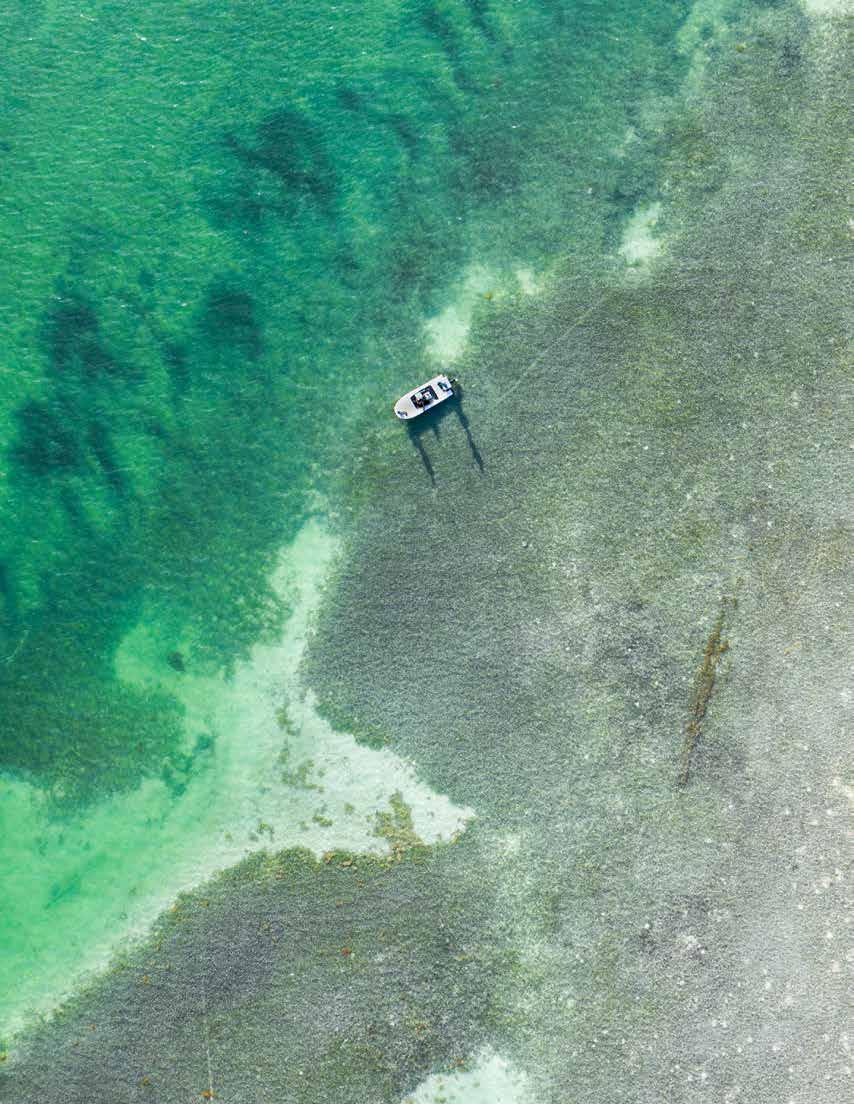
Unsustainable commercial fishing for menhaden in the Gulf of Mexico and mid-Atlantic poses a major threat to tarpon and other valuable gamefish. T. Edward Nickens
As Florida guides report an increase in shark interactions, Bonefish & Tarpon Trust and resource managers seek science-based solutions. Mike Conner
Anglers fish a flat in the Florida Keys. Photo: Tyler Bowman
As the 7th International Science Symposium came to a close, one message was clear. If we care about the flats fishery, and if we want to conserve it, then science has shown us the way—improve water quality, conserve coastal habitats, and ensure effective management.
The answer seems simple enough, but we know the process of change rarely unfolds in a straight line. In this case, the way forward will continue to be challenging as competing interests vie for access to the resource. Similarly, we won’t be given the luxury of time, or the choice to focus on one challenge to the exclusion of all others. Instead, our approach will need to be integrated and comprehensive, working on all of them simultaneously and with everything that science can bring to the fight!
This approach is readily evident in the scope of work across BTT’s research and conservation programs and can be seen again in this issue of Bonefish & Tarpon Journal.
BTT has long supported Everglades restoration, and our commitment is unwavering. It was gratifying to take part recently in the groundbreaking ceremony for the long-awaited EAA Reservoir—a major and hard-fought centerpiece in the restoration plan to send water south to Florida Bay. The occasion reminded us of our past trips to Tallahassee and Washington, DC, to advocate for the project’s authorization and funding, our calls to action, and our collaboration with Now or Neverglades partners to promote the coalition’s petition. Yet, after marking the occasion on a remote corner of ground south of Lake Okeechobee, we returned to unfinished business in the Everglades and, simultaneously, in response to new water quality challenges emerging across Florida.
Case in point, following last year’s alarming report of pharmaceutical contaminants in bonefish, BTT will soon release the results of a similar study on redfish. Our scientists sampled redfish from nine major estuaries statewide looking for traces of 95 common psychoactive and heart medications, antibiotics, pain and allergy relievers, opioids, and other medications. The results? Drugs were found in nearly every sample—94 percent of the 113 fish tested—and at higher and concerning levels in half of the fish tested.
These results make clear that the problem we first documented is not limited to bonefish or to the waters of South Florida and the Keys. Rather, pharmaceutical contamination is widespread across Florida’s marine habitats—a dire consequence of a wastewater infrastructure not up to the task. In her article, “No Time to Waste,” Alex Marvar reports from the 7th International Science Symposium on both the causes and remedies. Scientists and policymakers agree that it isn’t too late to save the state’s fisheries from pharmaceutical contamination—at least, not yet. But action is needed now, especially given the favorable opportunities to capitalize on state and federal funding for infrastructure.
The ever evolving and always complex water quality issues such as these remain our top priority at BTT. If we lose our water, we lose our fishery! But there’s more to the story—another perspective that should be of equal concern to flats anglers. Even if we were able to restore our waters to an earlier pristine state, we could still run the risk of losing our fishery. Yes, even with all of our current water woes addressed, the flats fishery would still face threats at scale stemming from the loss of coastal habitats that are so essential to sustaining the fishery. Likewise, we can’t assume that fishery management approaches from an earlier time will suffice in the face of the dynamic environment of today, from a changing climate to increased pressure on the resource. Our friend Sandy Moret speaks often and eloquently about the “weight of humanity” on the water.
In response, BTT has expanded its habitat restoration and
Carl Navarre, Chairman
 Jim McDuffie, President
Jim McDuffie, President
conservation efforts in recent years to include the largest mangrove restoration project in Bahamas history, restoration of a creek system on East Grand Bahama blocked for decades, planning to restore two tracts at Rookery Bay on Florida’s Gulf Coast, and the habitat-related recommendations advanced last year in the Florida Keys National Marine Sanctuary (FKNMS) plan.
Mike Adno reports in “Charting the Way Forward” about how BTT, the Lower Keys Guides Association and the Florida Keys Fishing Guides Association collaborated on their responses to the Sanctuary’s Restoration Blueprint, with a focus on preventing habitat loss and degradation, improving water quality and reversing fishery declines. This represents the first update to the Sanctuary’s management plan in 15 years, and decisions codified in the revised plan will potentially impact the flats fishery for decades to come.
Habitat loss is also evident in Chris Santella’s piece, “BTT Expands Presence in Belize.” Alongside the country’s angling community, BTT has advocated against irresponsible development at Blackadore Caye, Cayo Rosario, and Deadman’s Caye at Turneffe Atoll. The groundswell of opposition by guides, lodges and other stakeholders is enabling BTT and its partners to put a bright spotlight on unwise coastal development and its impacts on the fishery.
As with the unprecedent changes in water quality and habitat over recent decades, we have also witnessed how environmental changes and resource use have necessitated changes in fishery management. BTT’s research helped make the case for a spawning season closure at Western Dry Rocks (WDR) in the spring of 2021. Our work continues today through monitoring at WDR and three other unprotected sites used by spawning permit. The resulting data will enable the Florida Fish and Wildlife Conservation Commission (FWC) to make informed decisions when this management action sunsets after seven years.
In this issue, you will also read about two other management issues of growing concern to BTT. In his excellent article, “The Pogy Problem,” T. Edward Nickens explains how menhaden, a critically important forage fish for many species, including tarpon, are being exploited by two foreign corporations—and how BTT is partnering with other conservation leaders to advocate for management changes. And in “The Uninvited Guest,” fishing guide Mike Conner writes about angler interactions with sharks and the subsequent depredation of flats species, which have many anglers calling for a broader discussion on management actions and ethical practices by anglers. As this edition of the Journal goes to press, BTT has just announced a new project to research shark-angler interactions in the Keys at different locations and with different fishing methods.
We hope you will find this issue of Bonefish & Tarpon Journal informative, entertaining, and emblematic of your support and commitment to the cause. And we hope it will renew your own steadfast resolve to help BTT deliver the grand slam of flats conservation—clean water, intact habitats and effective management!
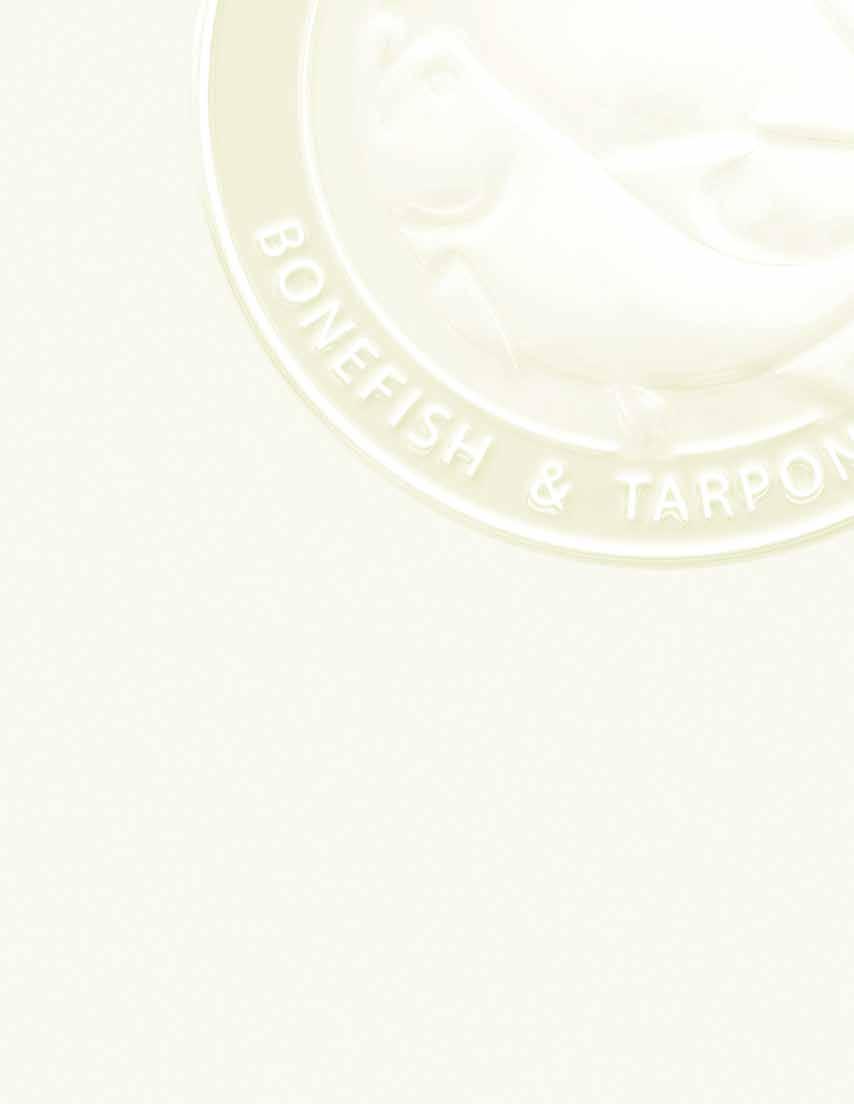
Yonder™ 750 mL Water Bottle





NOAA Fisheries Biologist Dr. Michael Larkin and Dr. Jennifer Rehage, a coastal fish ecologist and associate professor at the Institute of Environment at Florida International University, have been elected to the Board of Directors of Bonefish & Tarpon Trust.
“Drs. Larkin and Rehage know BTT and the flats fishery well,” said BTT President and CEO Jim McDuffie. “Their commitment to our mission and their expertise as scientists will be valued at the board table.”
Dr. Larkin grew up fishing in the Northeast but moved south to pursue a marine science degree at the University of Miami. After receiving the Bachelor of Science, he accepted a job focusing on reef fish surveys with the Florida Fish and Wildlife Research Institute in the Florida Keys, where he developed a passion for fishing for bonefish and tarpon. At that time, the University of Miami was seeking graduate students for its newly formed collaboration with Bonefish
and Tarpon Unlimited (which later became Bonefish & Tarpon Trust). Larkin joined the UM-BTT collaboration for graduate school and worked on numerous projects, including satellite tagging of tarpon and bonefish tagging, tracking, and age-and-growth studies.
“I am excited to return to Bonefish & Tarpon Trust,” Dr. Larkin said. “It’s amazing to see how far the organization has grown since I was last involved. I look forward to joining BTT’s Board of Directors and continuing to advance the science.”

After receiving his doctoral degree from the University of Miami in 2010, Dr. Larkin joined NOAA Fisheries, where he works in the management branch, analyzing fisheries data to guide management decisions. Dr. Larkin resides in St. Petersburg, FL with his wife and two children.

Dr. Rehage’s research examines how water decisions and water quality issues
affect coastal fishes and the valuable recreational fisheries they support. Over the past 15 years, she has studied snook, juvenile tarpon, Crevalle jack, Florida largemouth bass, and bonefish throughout the Everglades and coastal Florida, and collaborated with anglers and fishing guides to better understand recreational fisheries and their dependency on water management and healthy habitats.
In partnership with BTT and collaborators, Dr. Rehage’s research team has been examining the causes of bonefish population decline as well as the threat of pharmaceutical contaminants to our coastal fisheries, focusing on bonefish and most recently redfish. Dr. Rehage grew up in Uruguay, where, as a child, she spent time at her grandfather’s fishing club.
“I am honored and delighted to help BTT bring science to the fight,” said Dr. Rehage. “This is super meaningful and I am grateful for the invitation.”


United States veterans from Project Healing Waters recently joined BTT staff, partners, and bonefish guides to plant 1,400 mangroves on Abaco as part of BTT’s Northern Bahamas Mangrove Restoration Project, which will revitalize important bonefish habitat and bolster coastal resilience for local communities. The largest effort of its kind in Bahamas history, the five-year project seeks to plant 100,000 mangroves in areas of Grand Bahama and Abaco hardest hit by Hurricane Dorian, with more than 26,000 mangroves planted to date.


BTT Vice President Kellie Ralston and board member Noah Valenstein joined Governor Ron DeSantis on December 1 in Miami where he announced seven awards totaling $22.7 million to support water quality improvements and protection of Biscayne Bay, which provided vital habitat for bonefish, tarpon, permit, and numerous other species. Projects funded through the Biscayne Bay Grant Program include septic to sewer conversions, stormwater management and wetland restoration in areas surrounding Biscayne Bay, Florida’s largest estuary with a direct connection to Florida’s Coral Reef. BTT advocated for a number of these projects and worked with the DeSantis Administration to secure funding.
Atlanta area friends enjoyed an afternoon of shooting on October 26 followed by a discussion between renowned angler Andy Mill of the Mill House podcast and Monte Burke, the acclaimed author



Since 2016, Bonefish & Tarpon Trust has been working with anglers and guides as citizen scientists to identify tarpon and snook nursery habitats and classify them as natural or degraded. Natural habitats are able to function as productive nurseries for juvenile fish, and require protection. Degraded sites are in need of habitat restoration. To prioritize these sites for protection and restoration, BTT is creating a Vulnerability Index (VI), which uses GIS mapping data layers for nursery habitat sites overlaid with data on current and potential development locations, freshwater flows, and land ownership (public or private) to categorize sites as High, Medium or Low vulnerability.
The current focus is Charlotte County, Florida, near the tarpon fishing capital of the world—Boca Grande. BTT recently partnered on a grant proposal with Florida Fish and Wildlife Conservation Commission (FWC), Coastal and Heartland National Estuary Partnership (CHNEP), and Charlotte County through NOAA’s Actionable Science Program that would fund collection of data layers needed to construct the Vulnerability Index and package it in a way that can be used by Charlotte County’s land use planning department. Once this VI is in place, BTT plans to expand to other regions in the state where sportfish nursery habitat is at risk.
oceanographic models to simulate where bonefish larvae in the Bahamas are transported after spawning, thus linking an important spawning location and places to consider for juvenile habitat protections. The computer simulations are the first to link spawning locations and nursery areas across vast spatial scales that would not be possible using traditional fisheries surveys. This works builds on previous research that linked adult bonefish home ranges and pre-spawning aggregation locations, which informed the creation of new protected areas in The Bahamas. Additional research determined the spawning patterns of bonefish, showing they spawned offshore in deep water at night.
These important new findings suggest that additions are needed to the existing Bahamas’ protected area network to further conserve bonefish populations. The new areas of concern are in the Moores Island area of Abaco, the central-most eastern islands of the Berry Islands, and North Eleuthera. Additionally, existing national parks in the Marls of Abaco, North Shore/The Gap of Grand Bahama, and the Joulter Cays north of Andros should be expanded. The Bahamas’ existing protected areas already protect nearly 86.5 billion acres of sea and land. But the national park expansions suggested by this study would add additional marine habitat that is targeted at the bonefish fishery, and for the first time ever, conservation of bonefish nursery habitats—the foundation of a healthy fishery.
2022 Grand Champions
Swamp Guides Ball
Luke Krenik and Capt. Eli Whidden
March Merkin Permit Tournament
Jose Ucan and Capt. Justin Rea
Golden Fly Tarpon Tournament
Bart Knellinger and Capt. Bear Holeman
Don Hawley Tarpon Tournament
Mark Weeks and Capt. Andy Thompson
Gold Cup Tarpon Tournament
Dave Preston and Capt. Luis Cortes
Del Brown Permit Tournament
Mike Ward and Capt. Brandon Cyr
Herman Lucerne Biscayne Legends Classic
Collin Ross and Rick DePaiva
Herman Lucerne Memorial Backcountry Fishing Championship
Andy Yaffa and Capt. Jared Raskob
Islamorada Invitational Fall Fly Bonefish Tournament
Robbie Binder and Capt. Eli Whidden
Recently published research from Bonefish & Tarpon Trust and Florida Atlantic University used advanced computer
Cheeca Lodge & Spa All-American Backcountry Fishing Tournament
Jim Bokor Jr. and Capt. Richard Black
Bonefish & Tarpon Trust’s 7th International Science Symposium & Flats Expo was held on November 4-5, 2022, at the PGA National Resort in Palm Beach Gardens, FL. Presented by Costa Sunglasses, the triennial event brought together stakeholders from across the world of flats fishing—marine scientists, resource managers, industry leaders, and the angling community—to share information, collaborate, and learn from one another to advance flats fishery conservation in the Southeastern US, Gulf of Mexico, and Caribbean Sea. The mix of attendees and diversity of presentations and expert panels exemplified the Symposium’s theme of Conservation Connections, with an emphasis on addressing known fisheries management needs with actionable science. The two-day program featured science presentations and discussion panels by BTT and its collaborating scientists on important research and conservation topics, including the urgent need to improve water quality and wastewater treatment infrastructure in Florida, and to protect and restore threatened habitats throughout the range of bonefish, tarpon, and permit in this hemisphere.
Meanwhile, the fishing panel discussions featured top anglers



and guides, including Steve Huff, Brandon Cyr, Rick Ruoff, and Bahamian bonefishing legend Ansil Saunders, who shared their winning strategies for success on the flats and underscored the need for anglers to support conservation. The well-attended Youth Panel provided the next generation of anglers the opportunity to discuss their plans for the future of the sport and their efforts to ensure the sustainability of the flats fishery. The Symposium also included fishing and fly-tying clinics and the popular Art + Film Festival, which showcased a diverse array of paintings, sculptures, and the latest fishing and conservation short films.
At the Symposium’s expanded Flats Expo, representatives from 60 of the leading boating and fishing brands and lodges were on hand to share information about their latest products and packages and their corporate commitment to conservation with the hundreds of participants in attendance. The Symposium concluded with a special evening celebration to commemorate BTT’s 25th Anniversary and recognize Circle of Honor inductees Matt Connolly, Sandy Moret, Chico Fernandez, Dr. Andy Danylchuk, and Dr. Gordy Hill for their many enduring contributions to the conservation of our shared flats fishery.














On the heels of chilling new research into the health of Florida’s redfish population, an international cohort of researchers says it isn’t too late to save the state’s fisheries from pharmaceutical contaminants—at least, not yet.
 BY ALEXANDRA MARVAR
BY ALEXANDRA MARVAR
In back-to-back studies into two of Florida’s most important sportfish, researchers found that behavior-modifying drugs meant for humans are leaching into coastal waters—and messing with aquatic life. At Bonefish & Tarpon Trust’s recent International Science Symposium & Flats Expo, experts traveled from as far away as Sweden to present new findings on the presence of chemical substances—from caffeine to acetaminophen, antidepressants to opioids—up and down the food chain, from predators like bonefish and redfish to crabs, shrimp, and barnacles—and even seagrass—all across the state.
In the summer of 2022, researchers from Dr. Jennifer Rehage’s Coastal Fisheries Lab at Florida International University, with the help of expert fishing guides, set out to catch redfish from nine major Florida estuaries in order to test them for 95 common psychoactive and heart medications, antibiotics, pain and allergy relievers, opioids, and other medications.
Catching the individual redfish didn’t always come easy— particularly in the Indian River Lagoon—but the FIU team, including lab manager Andy Distrubell and graduate students Nick Castillo and Shakira Trabelsi, caught their target number in
Redfish are an important part of Florida’s recreational saltwater fisheries, which are worth more than $11 billion annually.

each fishery and sent plasma and muscle tissue across the Atlantic to Umeå, Sweden.
There, their collaborators, including Dr. Tomas Brodin, a professor of behavioral ecotoxicology at the Swedish University of Agricultural Sciences, tested the samples. Rehage’s team in Miami anxiously awaited the results, wondering how they’d measure up to the team’s 2021 BTT study on pharmaceutical contaminants in Florida Keys bonefish.
When the numbers came back, they learned Florida redfish didn’t have as many pharmaceuticals as bonefish. But that’s where
the good news ended, Rehage said. Drugs were found in nearly every sample—94 percent of the 113 fish tested—across all nine fisheries and when found, the levels were high and concerning in half of the fish tested.
What really piqued Distrubell’s interest was that, according to the data, different estuaries seemed to specialize in different contaminants. In the Everglades: caffeine. In Apalachicola: an opioid painkiller often prescribed to patients after a surgery, tramadol. Other drugs, like cholesterol-lowering ezetimibe, were “scattered everywhere,” he said.
Meanwhile in Umeå, Brodin said that while redfish numbers may have been a little less extreme than in the previous bonefish investigation, the samples were still raising eyebrows among his team: “We are actually re-running a few samples now from one redfish that had extremely high levels of caffeine,” Brodin noted. “We want to know if it’s really possible. Have they been drinking Cuban coffee or something? We’ll see.”

The future of these species could lie in these data. Fish have some of the same key receptors in the brain and body as humans do, and drugs affect their behavior in some surprisingly similar ways, Brodin explained. In 2013, he and colleagues published a groundbreaking study on the behavioral changes in perch exposed to drugs such as a benzodiazepine called oxazepam, with an eye to activity, sociality, and boldness. The data showed that when exposed to the anti-anxiety medication, the fish became less social and tended to take more risks.
Since that revelation, human drugs and their associated behavioral changes have been studied in fish, such as European hatchery salmon. The problem of pharmaceutical contamination in marine species is much more widespread than previously believed, Brodin said, and the effects could influence everything from predation to migration to spawning—key behaviors that have
a bearing on entire ecosystems.
Meanwhile, what happens to the substances themselves once they trickle into waterways and oceans? How far can they travel? How long do they last? These are big unknowns, Rehage explained.
“Only a small number of the substances we are testing for have information about half-life,” she said. “What’s their persistence in the marine waters? Nobody knows. That’s really scary.” Meanwhile, the amount of contamination flowing from land to sea is ticking upwards year after year as a growing number of people around the world take pharmaceuticals and new drugs are constantly being added to the mix.
“We have this tremendous amount of production of pharmaceuticals,” she said, “and they’re really important to our quality of life, but we need to start thinking about: ‘How do we make them so they don’t pollute our environment and have side effects on wildlife?’ And if we’re not going to make them better, we need to clean them up.”
Is there more to learn about pharmaceuticals and fish than the studies so far have been able to reveal? Definitely. Why are the otoliths (the calcium ear “stones”) of the redfish Distrubell and Dr. Aaron Adams caught in Indian River estuary different from
all their other redfish samples? What do benzos do to bonefish breeding behavior? Are these pharmaceutical cocktails harmful to the health of reds and bones? Are herons and other marine birds across the Everglades hopped up on caffeine? What about sea turtles? Dolphins? Manatees? Only further study can get to the bottom of these questions, but according to BTT Director of Science and Conservation Dr. Aaron Adams, Bonefish & Tarpon Trust and other research entities have already gathered the data they need to see there is a big problem—and to understand what needs to happen to address it: more and better wastewater treatment.
This widespread pharmaceutical contamination across Florida’s marine habitats is just one dire consequence of the state’s current wastewater infrastructure, which is being increasingly challenged by everything from sea level rise and tropical storms to rapid population growth and increasing urban density, Adams said. It’s a challenging situation. At this point, Adams said, “asking for more research is delaying the inevitable.” Right now, Florida needs action.

It’s time to clean up Florida’s water, and Adams says next steps are clear: the state needs to install upgraded water treatment technology in existing water treatment plants that can remove pharmaceuticals and other contaminants (like PFAS), bacteria and viruses, and more from treated water.
“Fixes have already been found,” he said. “These retrofits have already been tested and implemented in Sweden, Switzerland and Germany. It’s not a quick fix, and at this point it will be expensive. But we can’t really afford to not address this problem.”
Within four years of Brodin and team’s 2013 study on contaminants and perch, work was already underway to remediate the problem in Sweden. Wastewater treatment plants across the country, with the help of Sweden’s environmental protection agency, had pulled together plans and funding for pilot studies on processes like ozonation, granular activated
carbon filtration and more. As of 2022, approximately eight fullscale retrofits of wastewater treatment facilities are already in operation, Brodin said, yielding “clear positive effects on certain, more sensitive aquatic species.”
These positive outcomes include an inspiring population bounce-back among some of key food resources for fish like mayflies and caddisflies, which are also among the world’s most threatened insect species.
“The methods are out there,” to clean up Florida’s marine environment, Brodin said, “and I think Florida has a unique opportunity to be at the forefront of North America.”

According to BTT VP for Conservation and Public Policy Kellie Ralston, the state is already laying the groundwork for forwardthinking solutions like these.
“Statewide, we’re at $300 to $400 million in the last four years towards water resources and Everglades restoration projects,”
Ralston said. “It really is kind of unprecedented. With significant federal contributions, there’s a lot of momentum to tackle these challenges.” Measures like a new and expanding wastewater grants program and other investments in modernizing wastewater infrastructure are also underway. And the new redfish study could shed light on a roll-out strategy that will have the biggest water quality impacts.
“The redfish data indicate that some specific locations could be prioritized over others,” Ralston said, citing comparatively higher numbers and higher concentrations in Tampa and Apalachicola, while previous data from the bonefish study pointed to Biscayne Bay as another “hotspot,” she added.

Besides upgraded water treatment facilities, moving more of Florida’s wastewater into treatment facilities, rather than into leaking septic systems, is critical. The Florida Keys made the switch from septic to sewer systems transporting wastewater to treatment plants. The Keys started the conversion 20 years ago, and the major effort was completed just a few years ago. According to available data, this has already brought about lower levels of hazardous nutrient and fecal markers—along with observations by community members and fishing guides on improved water clarity, fish health, biodiversity and more. However, even in the Keys, the wastewater treatment plants do not include technology needed to remove pharmaceuticals and other contaminants.
At a minimum, other communities need to follow the Keys’ lead, retire ancient leaking septic systems, and convert to updated and innovative wastewater treatment systems that address existing pollutants as well as the newly identified pharmaceutical residues. Statewide, one in three households use septic systems, with over 100,000 septic systems in Miami-Dade County alone. “It’s great to see this growing realization of the need to address Florida’s water quality and habitat issues,” Adams said. “We’ve had a great start, but a lot more investment is needed.” Accordingly, BTT will continue to push for increased funding and policy changes
to address these issues. Right now, the organization is actively seeking public and private partners to retrofit one or more waste treatment facilities as a proof of concept.
“We have the knowledge to do it,” Adams said of tackling chemical contamination along Florida’s coast. “We just need the dedication—and the funding—to get it done.”
Bonefish & Tarpon Trust and the FIU Coastal Fisheries Lab wish to thank the following guides and anglers for their invaluable assistance with the Redfish Pharmaceutical Contaminants Study.
Danny Allen
Rami Ashouri
James Beers
Jim Brown
Frank Catino
Don Downs
Josh Greer
Chris Hong
Jason Kendall
Tom King
Scott MacCalla
Gary Malstrom
Hayden Malstrom
Andrew Marks
Brandon McGraw
Cristian Minami
Anthony Morgan
Chad Osteen
Dustin Pack
Travis Pack
Joe Tanksley
Troy Weaver
David White
Mike Yankee


Bonefish & Tarpon Trust is collaborating with Florida Keys fishing guides to support a set of science-based recommendations for the Florida Keys National Marine Sanctuary’s revised management plan, known as the Restoration Blueprint.
 BY MICHAEL ADNO
BY MICHAEL ADNO
For every mile you drive in the Keys, the landscape talks. The ground points back to the Pleistocene when a coral forest rose between the Florida Straits and the Gulf of Mexico. Living coral grows just a stone’s throw offshore. And the water animates the place, drawing people to the Keys in the millions year by year. As Rachel Carson wrote of the Keys in 1955, “There is a tropical lushness and mystery, a throbbing sense of the pressure of life.” Today, that resource falls within the Florida Keys National Marine Sanctuary (FKNMS), a tropical archipelago managed by the National Oceanic and Atmospheric Administration—larger than the states of Delaware and Rhode Island combined.
Since 1990, in cooperation with the State of Florida, the Sanctuary has been responsible for managing that vast resource, which includes four national wildlife refuges, six state parks, three aquatic parks, and two of the country’s earliest national marine sanctuaries. Now the Sanctuary management plan is being reworked through a collaborative initiative called the “Restoration Blueprint” to better protect the place.
From the northern edge of Biscayne Bay National Park, the

Sanctuary first forms a thin vein that falls south before enveloping the backcountry of the Upper Keys along the edge of the Everglades National Park. As it moves west, it fans out from the barrier reef running along the southern edge of the Keys to the rim of the Gulf until it reaches the Dry Tortugas along its western boundary. Within the 3,300 square miles, 6,000 different species of flora and fauna live alongside 80,000 human residents and the third largest barrier reef in the world.
The last time the Sanctuary amended the management plan was 15 years ago, and since 2007, the threats to the Keys have only grown more urgent with an exponential increase in tourism and habitat loss, and declines in water quality. Degradation of the island chain’s unique coral reef prompted creation of the State’s Pennekamp Reef preserve in 1960 followed in 1972 by the first federal marine unit: the Key Largo National Marine Sanctuary. Subsequently a series of large vessel groundings on the Keys reef provided the impetus for a broader federal marine unit (with authority to order large vessels away from the reef), which
was established in 1990. Now the problems afflicting the reef, and other Keys’ waters and fish habitat, include water quality and an explosion in boating use.

During the past year, Bonefish & Tarpon Trust worked with the Lower Keys Guides Association (LKGA) and the Florida Keys Fishing Guides Association (FKFGA) to better understand the Sanctuary’s Restoration Blueprint and how it would affect the flats fisheries throughout the Keys. Simply put, the coalition wanted to protect those habitats while retaining responsible access for guides and anglers in a series of recommendations they ultimately made to the Sanctuary.
“We have too many people loving our resource to death,” said Dr. Ross Boucek, BTT’s Florida Keys Initiative Manager. “We need more responsible management in the Keys.” In broad strokes, it’s as straightforward as placing more markers to help users navigate, reshaping boundaries for idle/no motor zones, and including adaptive management in the Blueprint.
Over the last decade, Monroe County has seen exponential tourism growth, increased cruise ship traffic, and an immense
uptick in recreational boat users, especially in the span of the pandemic when every vessel in the island chain seemed to be in use. “We’re long overdue for some management updates,” said Kellie Ralston, BTT’s Vice President for Conservation and Public Policy. As ever, the question for her was: How do you address all the folks’ desires and package that as policy? “The zoning proposals that we have put forward in our recommendations still allow for reasonable and responsible access almost everywhere,” she said. “There were only a few instances where we were supportive of no access areas because of resource concerns.”
When Dr. Boucek sat down with members from the LKGA and FKFGA, they looked over the Keys flat by flat, discerning which flats were eaten up by prop scars and which tarpon lanes were constantly run over by boats, and decided how to prioritize protections. “We listened,” Dr. Boucek said, “wrote it all down.” And that’s what formed the heart of the 74-page document of suggestions that BTT and the guides associations sent to the Sanctuary last fall.
Area by area, they laid out where critical habitats are found
throughout the Keys for permit, bonefish, and tarpon. The LKGA and FKFGA lent BTT the perspective of those absorbed every day in the resource, and BTT coupled that local knowledge with its science-based understanding of spawning behavior, migratory patterns, and feeding activity. What shook out after all that back-and-forth was a set of suggestions that were tailored to conserve crucial habitats for bonefish, permit and tarpon throughout the Keys.

The process began when the guides associations tapped their members’ understanding of the rhythms of the places they fish, discerning where fish swim and when, what obstacles they encounter, and the changes witnessed over time. That deep well of local ecological knowledge was collected and inevitably distilled. From there, in meetings, at marinas, and across the table, members shared that hard-earned knowledge with BTT, who used the accounts alongside its own data from long-term studies to figure out just what was at stake and how the Sanctuary could best address the declining fish populations, water quality, and habitat loss in the next iteration of its management plan.
Precedents for the BTT, LKGA, and FKFGA Restoration Blueprint proposals were the seasonal closure of Western Dry Rocks and the no motor zones in the Everglades National Park—both the product of a close collaboration between users and managers to conserve fisheries and vital habitats. Pointing to those successful management initiatives, Captain Andrew Tipler, President of the LKGA, feels hopeful about the opportunity not only to preserve the resources in the Florida Keys but to see them improve. He likened the reasonable restrictions included in the Blueprint proposal to the regulations in National Parks where some sites are only accessible seasonally, by trail, or rather have a specific means of reaching them to protect them from unfettered access or neglect. The groundswell of conservation efforts bound up in just this process alone bolstered Tipler’s hope as he acknowledged the involvement of the American Sportfishing Association, the Coastal Conservation Association Florida, and the International Game Fish Association among a handful of organizations that have become intimately involved in the Keys community, too.
For Captain Eric Herstedt, a member of FKFGA, channel
The Florida Keys are the birthplace of flats fishing. Photo: Ian Wilsonmarkers were the first thing that came to mind in an overhaul of the Sanctuary’s approach to management. “That’ll be huge,” he said. Nearly every day, he sees boats run aground, as do most guides fishing the Keys—not to mention the constant disturbance of fish throughout the year. In the maze of shallow basins and channels that make up the backcountry of the Keys, that’s acutely felt in how scarred flats degrade over time, losing seagrass and in turn becoming less attractive to fish. “People have discovered the water, and that’s a major challenge for NOAA to take on,” said Captain Will Benson, a LKGA member and a BTT representative as well as an advisory council member for the Sanctuary. “I see boats running aground and chewing up the bottom almost every day, and there is no law enforcement.”
“We’re asking for the Sanctuary to put in channel markers to help less-educated boaters, first-time boaters, or frankly people who have run out there a lot but find themselves challenged to navigate safely,” Benson said. Anyone who’s found themselves trying to line up islands in the dark or threading keyholes in low light knows that it’s not just novices who could benefit from more markers in the Keys but everyone. Not only would it condense boat traffic and provide safe passage for those running the backcountry, but as Benson said, it would protect the flats that form the heart of the fishery and, in some ways, codify behavior that the majority of guides already practice. “It comes down to good boater education,” he said.

From Ocean Reef down to Sugarloaf, everyone has watched as a string of tarpon shows up hundreds of yards away. The mind starts making dozens of calculations as the body courses with cortisol, and then in some cruel turn of happenstance, an uneducated boater or jet ski buzzes the string, and the fish change

course. Sometimes that happens over and over, eviscerating any chance at a shot. While it’s a stretch to assume that the decades of etiquette practiced by guides could be commonplace among everyone (Have you ever tried to explain this to a jet skier?), markers along the ocean side of the Keys would help control that––alongside a network of idle zones and no motor zones to protect those important basins and travel lanes.
“The tarpon fishery is definitely the one that seems to be taking the brunt of this,” Dr. Boucek said. And included in the coalition’s suggestions is a series of idle and no motor zones to suit those places where fish tend to congregate, whether to move from channel to channel or rest in a certain basin.

Herstedt remembered the pushback from guides when the Everglades National Park introduced its own no motor zones, referred to as poll/troll zones, which were originally overly expansive and limited access, but were modified with input from a BTT-fishing guides collaboration to incorporate boat running lanes. But after seeing the effect on the fishery, especially in places like Snake Bight, Herstedt feels that guides understand the value. “We weren’t happy,” he said at first, “but now we love them.” For the FKFGA and Herstedt, the priority with the Restoration Blueprint is to protect as much they can while they can—a thread of solidarity among everyone in the Keys.
“It matters to everybody,” Benson said. “The Florida Keys has a coastal economy.” So whether or not this was on their radar, the guides all felt that this was central to the character of the Keys. “We need to protect it,” Tipler added, “Make it better.”
With all of the moving parts and vast stretches of water that fall within the Sanctuary’s borders, not to mention the other federal and state management agencies that work within its
borders, BTT and LKGA pushed hard for measures that would focus on water quality, adequate law enforcement, and prioritizing adaptive management. Just in the last five years alone, the effects of climate change, hurricanes, and boat traffic seem exponentially worse. “The agency needs to be more responsive to those changes,” Benson said. “We’re asking them to include this concept of adaptive management, so we don’t have to wait 20 years to respond to something that needs to be addressed now.” It’s a means to cut through some of the red tape and bureaucracy that comes with coordinating responses among five agencies with different approaches to management. If a boundary needs to move due to a displaced bird population or blocked channel, the Sanctuary can act accordingly rather than sitting on its hands for years.
But as everyone involved will tell you, it’s not the sole responsibility of the Sanctuary to protect the resource—it’s yours and mine too. For everyone who visits the Keys, whether it’s to snorkel, get lost, or fish, there needs to be some engagement beyond your time on the water. Dr. Boucek pointed to how awareness in recent years has spread like wildfire, and he hoped that investment in advocacy on the part of anglers and guides continued. Write policy makers. Push the agencies to take responsibility. Get friends involved. “Stay engaged,” he said.
This back-and-forth among the handful of agencies, BTT, and guides is just one part in a long sequence. Each step will shape what this place looks like in a century.

Bonefish have long been associated with the Florida Keys, the birthplace of flats fishing, but, up until very recently, their spawning activity in Florida waters had remained largely a mystery.

Building on previous work in the Bahamas, where Bonefish & Tarpon Trust has identified numerous bonefish pre-spawning aggregations (PSAs), BTT scientists are now homing in on areas in the Keys important to spawning, and have confirmed what many have suspected for decades: that Keys bonefish do what bonefish do in the Bahamas and other places across the Caribbean. They gather in these PSAs, gulp air to fill their swim bladders and migrate offshore at night during certain moon phases from November through March or April. They then dive hundreds of feet
deep. As they return to the surface, the pressure changes in their swim bladders allow for the release of eggs and sperm, creating a broadcast spawning event.
And now, thanks to ever-evolving technology, Bonefish & Tarpon Trust knows even more about these clandestine romantic gatherings of bonefish schools that can number in the thousands. All it took was one fish to give up its secrets.
Thanks to a new monitoring tool called an archival data storage tag (ADST), Dr. Ross Boucek, BTT’s Florida Keys Initiative Manager, was able to better understand the bonefish mating ritual that, up until 2010, was a virtual mystery (that’s when PSAs were first discovered and documented). Boucek and his team—the first to ever use this technology—implanted four bonefish with
ADSTs, and were able to determine when the fish gathered, when they moved offshore and, within a 12- to 13-minute window, when the bonefish likely spawned.

Only one of the four tagged fish spawned, Boucek believes. Three of the tagged fish, according to data from their ADSTs, never moved offshore to deeper water. But that last fateful bonefish did its thing.
“It gathered at the PSA site and then it just kind of disappeared for 48 hours,” Boucek reported. “When it came back, the data we collected told us what likely happened.”
Here’s the rest of the love story.
When that one tagged fish moved offshore, likely with thousands of others gathered together in a PSA, it dove to a depth
Bonefish are on the rebound in the Keys after a dismal decade that followed a declining trend.
of 304 feet. As it ascended in the water column, it paused below 100 feet for more than 12 minutes. This is likely when it released its eggs (the fish was female). Then it returned to the surface and ventured back to the flats.
“We relocated this fish with a manual tracker nine days after it spawned, when the fish tracker detected it—it was almost in the same spot where I caught it and put the tag in,” Boucek said. How much time passed between when the fish was caught and tagged and when it turned up on its home flat after its romantic jaunt? Just about two months.
Bonefish are on the rebound in the Keys after a dismal decade that followed a declining trend. Now, Boucek said, there’s a growing population of bones around Key West and numbers continue to improve on the flats throughout the Keys. Why? Research into the question is ongoing, but it’s clear the population rebound coincided with a number of different events.
For instance, the state of Florida recently spent about $1 billion removing old and faulty septic systems in the Keys. When that effort concluded, fish numbers started to rise.

“It’s hard to ignore that,” Boucek said. “But there are a number of different mechanisms in play, including planetary-scale ocean phases and other events that could cause conditions to be more
favorable for bonefish.”
Additionally, all the bonefish in Florida aren’t necessarily from Florida—BTT’s research shows that some larvae from spawning events in Mexico, Belize, and even southwest Cuba can drift on ocean currents to the Keys, where they mature and take up residence. The efforts of BTT and others in Belize, Mexico, and Cuba to reduce harvest of bonefish by artisanal and commercial fisheries might be having a positive impact on bonefish populations in Florida.
“We still have so much to learn,” Boucek said, “but we’re making great progress. There are so few opportunities to discover something new, so this recent detection meant a lot.”
What’s next? Well, if Boucek had his way, he’d be on hand for the next gathering of bonefish in a PSA in the Keys, and he’d do whatever he had to do to document the entire spawning process. And that may not be a pie-in-the-sky goal with the assistance of even more new tech—this one, a prototype receiver.
The receiver technology was initially used on surf beaches to warn swimmers and surfers in real-time when sharks were in the area. Boucek and BTT hope to know exactly when the next PSA starts to gather in the Florida Keys by using that same tech. The novel receiver was deployed in December 2022.
If the receiver alerts scientists in real time of a PSA starting to form, Boucek and team could drop everything and go witness this aggregation.
“If it works, we might be able to actually see a PSA in the Keys,” he said. “How cool would that be?”
Even cooler? If Boucek and his team find the PSA, they could use tag tracking gear to follow the bonefish as they move offshore to spawn. Not only would they get to witness a PSA, but they could essentially follow thousands of bonefish offshore to an actual spawning site.


“This project is really pushing the envelope with new technology,” Boucek said. “The goal is to be at the same place at the same time when these fish spawn.”
Chris Hunt is an award-winning journalist and author whose latest work includes The Little Black Book of Fly Fishing (with Kirk Deeter) and Catching Yellowstone’s Wild Trout. His work has appeared in Outdoor Life, Field & Stream, TROUT, The New York Times, Hatch Magazine, The Fly Fish Journal and other publications. He lives and works in Idaho Falls, ID.
The nets are called purse seine nets, and there is nothing inherently nefarious about them. They are simply effective. Astonishingly effective.
The spotter planes go out first: Fixed-winged aircraft that course low across the water, sometimes as low as 500 feet. In the Gulf of Mexico, they probe the coasts of Louisiana and Mississippi, and to a lesser extent, the waters off Texas and Alabama. Along the shores of Virginia, they scour the Chesapeake Bay and the open ocean. No matter the water, the spotters look for dark splotches that signal a school of menhaden, the small, oil-rich fish some call “the most important fish in the sea.” On the radio, the spotters stay in contact with large fishing vessels below, called “steamers.” Many are of World War II vintage, retrofitted for the job. Riding on the steamers are two seine boats, some as long as 40 feet. Each carries half of a purse seine net that can be 1,700 feet long or better, and some 60 feet deep. Top-line corks float the upper edge, while the bottom edge is fitted with metal rings,
through which a cable passes to cinch the net shut.
When the fish are located, the spotter plane directs the action. The seine boats are lowered overboard, and they begin to circle the school, playing out the net. As the seine boats close the circle, the steamer pushes more fish into the net. Soon the bottom of the purse seine is winched tight, and a hydraulic “raise rig” lifts the net to the surface. There, tens of thousands of fish are sucked into the ship’s hold through a vacuum hose more than a foot wide. There is little culling, and little ability to sort the catch. With few exceptions—such as marine mammals and sea turtles—whatever is in the net is disgorged into the ship’s hold. Whatever is in the net dies.
Along the two coastlines, the menhaden fishery is an enormous industry—the second largest continental fishery by weight—even though limited to a relatively few players. Two foreign-owned companies dominate: In the Gulf of Mexico, the enormous Omega Protein company operates fishing fleets and fish processing

Menhaden continue to be mismanaged by legislative bodies, negatively affecting recreational fisheries in both Atlantic and Gulf states.A commercial fishing boat searches for menhaden in the Gulf of Mexico. Photo: Healthy Gulf
plants in Abbeville, Louisiana, and Moss Point, Mississippi, while Daybrook operations are sited at Empire, Louisiana. In the Gulf alone, the two companies harvest about 1.2 billion pounds of menhaden each year. Along the Atlantic coast, Omega Protein runs a menhaden processing plant in Reedville, Virginia. The Atlantic States Marine Fisheries Commission approved in November a 20 percent increase in the coastwide catch to nearly 515 million pounds. In the Chesapeake Bay alone, the harvest cap is still nearly a staggering 112 million pounds.
Given such numbers, you might think that menhaden harvests would be deeply studied and carefully regulated. Instead, the menhaden fishery has the dubious distinction of being among the most unregulated in the country.

This despite growing concerns over bycatch.
This despite the critical role these diminutive fish play in feeding scores of fish species.
This despite better ways to manage menhaden. **
Pogy, fatback, bunker—depending on where you live, there are a number of nicknames for menhaden. The small filter feeders seine the open water for phytoplankton and zooplankton, and travel in enormous schools. Oily and soft-fleshed, menhaden are ground up, or “reduced,” to provide meal for pet foods and other products, and oil for nutrition supplements.
It’s a fish you likely wouldn’t eat if given the chance, but there are plenty of other willing takers. Menhaden are consumed by at least 32 prey groups. Redfish, speckled trout, and seabirds key in on the juvenile fish. King and Spanish mackerel, sharks, gag grouper, dolphins, tuna, and mahi mahi hunt the adults; one study showed that Gulf menhaden support some 40 percent of the diets
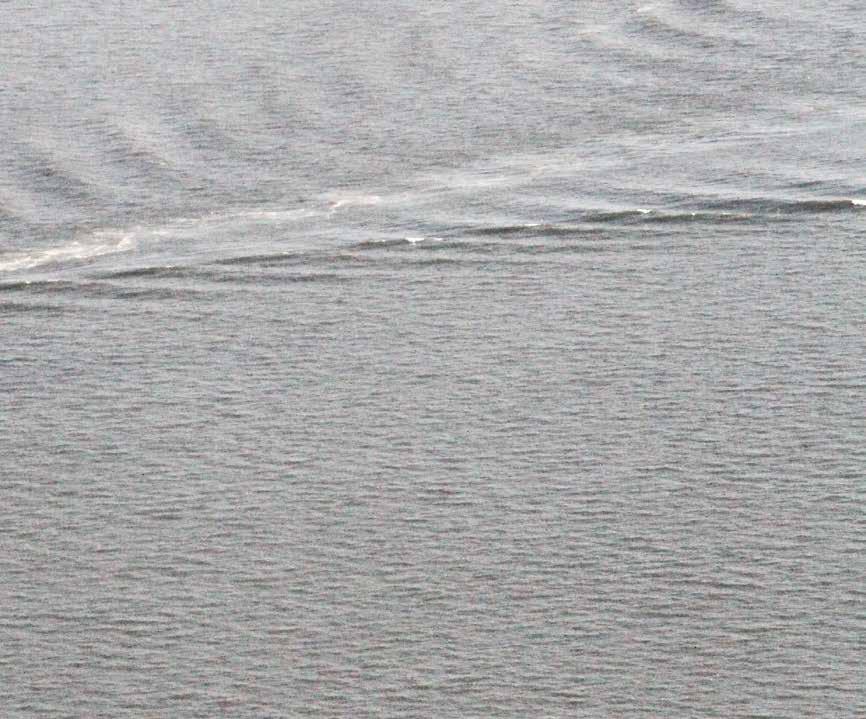
of both Spanish and king mackerel, and 20 percent of the food base for speckled trout. Along the mid-Atlantic and northeastern coasts, menhaden are a primary food source for striped bass, which have been shown to be particularly sensitive to menhaden harvest: not enough menhaden equals reduced striper growth and less successful spawning. And menhaden are a primary food source for tarpon in both the Gulf of Mexico and along the Atlantic coast. A Bonefish & Tarpon Trust-sponsored study of fin clips from angler-caught tarpon was launched to use stable isotope analysis to help determine the importance of menhaden and other prey items to tarpon from Louisiana to Virginia. Many fish spend three to five months per year in more northerly foraging areas such as North Carolina’s Pamlico Sound. “If we can show that this is a very important food source in those northern areas,” says Dr. Lucas Griffin, a BTT collaborating scientist at the University of Massachusetts Amherst, “it really leverages the message not only of menhaden conservation but the conservation of habitat and water quality that supports the freshwater flows menhaden need.” Just like stripers, insufficient menhaden forage for tarpon likely impacts growth rates and spawning.
All of this explains why menhaden are called a “forage fish”: By their legions they feed a significant portion of sea life along both the Gulf of Mexico and Atlantic coasts. Unfortunately, current efforts to manage menhaden populations—and both commercial and recreational harvests of the fish for bait—are coming up short. Historically, menhaden have been managed under a single-species stock assessment scenario, in which harvest levels are projected to maximize the number of fish that can be caught in a given year while preventing overfishing. A typical stock assessment is a snapshot of a current species population, but it doesn’t take into account ecological considerations beyond
the target species’ numbers. Stock assessments don’t factor in the ecology of the ecosystems in which the fish live. They don’t incorporate metrics such as water quality or habitat needs. They don’t take into account how critical a fish population might be to other fish and wildlife species as prey items, and they don’t reflect the critical role menhaden play in nutrient cycling—feeding on plankton and transferring those nutrients far up the food chain.
Other concerns about the current management strategy for the menhaden fishery are worries that the close-to-shore fishery—in many instances, the purse seines are deployed within a few hundred yards of the beach—damages shallow-water bottom habitat and can foul the water with a nasty mix of discarded fish and oily effluent.
And then there is bycatch. Many statistics point to the relatively low percentages of bycatch in the menhaden fishery. Estimates range between 1 and 2.5 percent, but when the commercial take is in excess of a billion pounds, the small percentages add up. An average annual haul in the Gulf of Mexico might be in the neighborhood of a billion pounds of menhaden. But 2.35 percent of that is 23 million pounds of bycatch. That’s no small number. NOAA reported in a 2016 study of bycatch in the Gulf menhaden fishery that as many as 1.1 million pounds of redfish fall prey to the purse seines each year. That figure certainly includes untold thousands of healthy breeding fish.
While it is true that recent stock assessments of menhaden—in the Gulf in 2021 and the Atlantic in 2022—concluded that the fisheries were not overfished or experiencing overfishing, it is also

true that using traditional stock assessments alone is an outdated and incomplete way of stewarding fish populations. “Stock assessments are a reactive approach,” explains Dr. Aaron Adams, BTT Director of Science and Conservation. “By the time you notice in a stock assessment that the fishery is declining, it may be too late to correct. If fish populations are declining due to overfishing, theoretically you can correct that. But if the critical habitat is lost, you’re done. For menhaden, issues such as habitat loss and water quality problems are mostly outside the processes that drive management.” And the growth of a market for menhaden as bait—both for recreational anglers and commercial crabbers and lobster potters—is something to keep an eye on. In the Atlantic, nearly a third of menhaden harvest is for bait and recreational landings.
Which is why BTT and a host of partners—among them the American Sportfishing Association, Coastal Conservation Association, Theodore Roosevelt Conservation Partnership, National Audubon Society, Founding Fish Network, and fishing groups along the Gulf and Atlantic coasts—are working to change the narrative around menhaden harvests, and push regulators to recognize and codify a new way of thinking about these fish populations. Instead of simply managing by the numbers, disconnected from other ecological factors, a new paradigm would take into consideration the various other factors that affect fish populations.
Imagine, explains Adams, that you were in charge of throwing a luncheon buffet for 50 people. You ordered the food, put the kitchen staff in place, and opened the doors. Unfortunately, the first 10 guests in line were hungry and ate like hogs, loading their plates down as they moved through the buffet line. The next 20 guests might still have ample grub, but at the end of the line, the last 20 folks might find the roast beef picked over, the chicken down to a few scraggly wings, the deviled eggs gone, and the dessert table holding nothing but crumbs.
If you simply walked into the dining room at that moment, Adams explains, all you would know is that a lot of your guests got the short end of the stick. You wouldn’t know if there was a food shortage, or if kitchen staff didn’t show up for work, or if other factors were at play in the dearth of food.
“And that’s where we are with menhaden,” explains Adams. “There’s a black box that holds all these other factors that aren’t accounted for in a stock assessment, but that impact the population size. And we don’t look inside the black box.” We may know how many menhaden there are, he says, but not how many there could be, or should be, and what the limiting factors are that create such a gap. Much less is known about the impact harvest has on the ecosystem and the many species that rely on menhaden as food.
And it’s not only menhaden that are managed under this blinders-on approach, but just about every marine fish. Snook, redfish, permit, flounder, speckled trout—single species stock assessments are the standard methodology for modern marine fisheries management.
This needs to change, and thankfully, there are some steps in the right direction. In 2020, the Atlantic States Marine Fisheries Commission voted unanimously to include ecological reference points in its decisions affecting Atlantic menhaden. For the first time, consideration of menhaden’s impacts up the food chain would be required. A study had earlier found that without menhaden reduction fishing, there would be nearly 30 percent more striped bass in the system. For 2023, the ASMFC increased the catch quota for Atlantic menhaden by 20 percent, citing the 2022 stock assessment that found that the fish is in a healthy stock condition. But the commission was considering much higher
increases, so conservationists breathed a sigh of relief.
“We’d still like to see fewer menhaden extracted overall,” says Kellie Ralston, BTT Vice President for Conservation and Public Policy, “but we ended up in a pretty good place as far as the current harvest levels. It’s still a challenge with Atlantic menhaden, because the harvest is not well distributed along the coast, and there are locations in Virginia and the Chesapeake Bay with localized, concentrated menhaden harvest. This concentrated harvest can result in localized fishery depletions and impacts.” In June of 2022, BTT joined with a coalition of other groups and individual anglers that sent a petition to Virginia governor Glenn Youngkin asking him to move menhaden fishing out of Chesapeake Bay, which has resulted in a process to establish harvest buffer areas.
Fisheries conservationists hail these new approaches. “This is a relatively new approach to fisheries management,” explains Chris Macaluso, Director of TRCP’s Center for Marine Fisheries, “and there are lots of questions about how to find the right balance, and what this kind of management is going to look like in both the commercial and recreational fisheries. There are a lot of unanswered question that we are making our way through right now, but the broad scientific concept is fairly simple: Leave enough menhaden in the water to feed other fish.”
At present, Louisiana is at the center of these efforts because Louisiana holds a number of dubious distinctions. It is the only Gulf state that allows nearly unregulated fishing of menhaden. Florida’s blanket net ban keeps menhaden vessels out of its waters. Alabama has banned the practice. Other Gulf states have enacted buffer zones inside of which menhaden netting is disallowed: Texas has a half-mile limit, while Mississippi has buffer zones that extend one mile from the beach.
Louisiana has not followed suit, however. The state’s Department of Wildlife and Fisheries nixed a proposed one-mile buffer zone in 2020. And in 2022, Louisiana House Bill 1033 passed the House of Representatives but was stymied in the Senate. The bill would have capped Louisiana’s menhaden haul at 573 million pounds a year.
Part of the challenge in Louisiana and other Gulf States is rooted in the structure of the Gulf States Marine Fisheries Commission (GSMFC). Unlike the ASMFC, whose decisions are legally binding among the states and come with enforcement protocols, the GCMFC doesn’t have the authority to set regional catch limits and enforce them. The GCMFC “lacks the teeth of the Atlantic states’ agreements,” says Ralston. That requires a state-by-state approach, which is both time-consuming and more likely to involve

political pressures from industry and legislators.
For example, Louisiana did accept a quarter-mile buffer in late 2021, but that exclusion zone was originally proposed as a halfmile buffer. A quarter-mile provides very little protection, says Macaluso. “That line isn’t based off the water’s edge, but on the inside-outside shrimp line established in the legislature. It was a token measure by the Louisiana Department of Fish and Wildlife. In places those boats are still right on top of the beach. The peak of the menhaden fishery is during the redfish spawn, from mid-August to November. And that’s when you see the majority of dead redfish floating to the beach, and dramatic decreases in water quality.”
That quarter-mile effort was against the wishes of the conservation community, says David Cresson, Chief Executive Officer of the Coastal Conservation Association Louisiana. “It was just a way for the state to shut everybody up and look like they were doing something meaningful.” And since the original passing, large chunks of the coast have been removed from the regulation, including most of the Louisiana coast from the Mississippi River east to the Mississippi state line. “That was by design,” Cresson figures. “Mississippi has a one-mile buffer statewide, so now the Omega Protein boats stationed in Mississippi come to Louisiana waters to fish.” **
Moving forward on menhaden conservation along the Atlantic and Gulf coasts requires both acknowledgement of improvements in the fishery—most particularly in the Atlantic states—and a steadfast commitment to education about the stakes of not conserving fish populations whose ecological importance is only now being incorporated into management, though the science has been clear for a long time. At the moment, the political deck in Louisiana is stacked against meaningful conservation.
But Louisiana governor John Bel Evans can’t seek re-election, so there will be new legislators and a new governor in 2024. “The path forward is to continue fighting the good fight,” figures Cesson. “There is a strong groundswell of support in Louisiana for reasonable regulations in the menhaden fishery. It’s only politics that has stopped us from making progress, and we intend on making this a campaign issue that candidates will have to take a stand on.”

If nothing else, the challenges in Louisiana have helped build a strong coalition to fight for marine resources, says Ralston. The National Audubon Society is looking at the effects of menhaden harvest on birds, and TRCP’s ecosystem perspective is gaining traction. CCA’s emphasis on bycatch and sea bottom habitat issues is finding resonance among many anglers. And BTT’s expertise in science and research is bolstering arguments for greater conservation measures. From the American Sportfishing Association to the National Wildlife Federation and the National Marine Manufacturers Association, “there is a very diverse set of stakeholders in this fight,” Ralston explains, “and when you look at that many different groups, from so many different perspectives, all saying the same thing, and there is one lobby saying the opposite, that makes a strong case for the need for change.”
These are not mom-and-pop shrimping operations, explains Macaluso. These are not sole proprietor watermen out there running crab traps. “These are massive foreign corporations,” he says, “that employ plenty of hard-working local people. Our mission is not to put them out of business, but for there to be more complete understanding of the impact the industry is having.”


Belize has less than 200 miles of coastline. Yet its modestly sized coastal habitat boasts an outsized abundance of marine life, from a large section of the Meso-American reef (and its many denizens) to immense populations of permit, bonefish and tarpon. The Belizean citizenry and government officials largely recognize the ecological, cultural and economic significance of its marine environs, and have taken an active role in seeking ways to ensure its long-term well-being. This was evidenced in 2009, when Belize established catch-and-release regulations for bonefish, tarpon, and permit. The small west Caribbean nation has also established eight marine reserves, offering enhanced protection for sport fish and other wildlife.
Since 2006, BTT has been working in Belize to provide scientific and policy expertise where required to further conservation efforts. BTT’s first research project focused on juvenile bonefish habitat; a study soon after focused on tagging adult bonefish, tarpon, and permit to identify their home ranges and movement patterns. In 2013, BTT commissioned an economic impact assessment that showed that the catch-and-release flats fishery generates $112 million Belizean Dollars annually, underscoring the need to

conserve it and ensure its sustainability.
In recent years, BTT has stepped up its efforts in Belize. In 2019, Dr. Addiel Perez was hired as Belize-Mexico Program Manager; in 2022, he was joined by Lysandra Chan, who serves as Technical Assistant for the program. Having staff on the ground in Belize has enabled BTT to strengthen key partnerships with Belize’s angling community and resource managers with the goal of developing science-based conservation policies to integrate habitat protection and restoration in fishery management plans.
“There are three components to our work in Belize,” said Kellie Ralston, BTT Vice President for Conservation and Public Policy. “To educate, to engage in active conservation, and to provide information to support sustainable management policies and practices. As Belize gives non-governmental organizations (NGOs) in some regions the ability to co-manage conservation efforts with government agencies, we’ve learned to work closely with such groups.” Like in all the places where it works, BTT is pursuing an inclusive approach, working with all Belizean flats fishing stakeholders in a supportive role to further conservation goals.
 BTT is working with resource managers in Belize to conserve essential habitat for bonefish, tarpon, and permit.
Photo: Jess McGlothlin
BTT is working with resource managers in Belize to conserve essential habitat for bonefish, tarpon, and permit.
Photo: Jess McGlothlin
Highlighted below are some of BTT’s current and ongoing initiatives in Belize.
A development group called MML Investment LTD is attempting to build a resort in close proximity to Big Flat, Turneffe Atoll’s largest backreef flat and an important feeding area for bonefish and permit. The development would consist of 22 cabanas—12 of them over the water—plus walkways connecting the three islets resting west of the flat. The project—within 500 feet of the Meso-American Reef—would require considerable dredging and clearance of approximately 20 percent of terrestrial flora to place buildings.

The development flies in the face of many rules and regulations already in place to protect coastal environments. If ultimately approved, it would add fuel to the already problematic fire of development in protected areas, following Blackadore Caye and Cayo Rosario. BTT is working with a number of partners, including Turneffe Atoll Trust and Turneffe Atoll Sustainability Association (TASA), which co-manages the Turneffe Atoll Marine Reserve, to mobilize opposition to the development. While not anti-development, TASA believes developers must operate within the regulations. Short-term revenue generation cannot be pursued at the cost of long-term damage to the ecosystem.
Close to the town of San Pedro on Ambergris Caye, local flats fishing guides are battling a development on Cayo Rosario, which is known for exceptional permit fishing. Like the proposed construction at Big Flat, Cayo Rosario’s plan calls for overwater structures and considerable dredging—even though the property falls within the boundaries of the Hol Chan Marine Reserve. Should the project continue, the prolific flats, home to abundant marine and bird life, will be forever changed. “Our guides used to utilize the flats surrounding Cayo Rosario every day,” said Chris Leeman, co-owner of Blue Bonefish Lodge on Ambergris. “But
since development has started the fish are less frequently visiting those flats.”
Working with Leeman and other local stakeholders, BTT has rallied members of the Ambergris guide community and others in the tourism industry to oppose the resort construction on Cayo Rosario. BTT has also released statements to government officials citing the negative impacts of the development, and assisted Hol Chan Marine Reserve managers with their statement of opposition.
In 2010, BTT helped fund groundbreaking research on bonefish spawning habits. During full and new moon cycles from fall through early spring, fish form pre-spawning aggregations (PSAs) at nearshore sites, where they prepare to spawn by porpoising at the surface and gulping air to fill their swim bladders. At night, these large groups of fish—as many as 10,000—swim offshore and dive hundreds of feet before surging back up to the surface. It’s believed that the sudden change in pressure during the ascent

makes their swim bladders expand, helping them release their eggs and sperm. After fertilization, the hatched larvae drift in the ocean’s currents for between 41 and 71 days before settling in shallow sand- or mud-bottom bays, where they develop into juvenile bonefish.
Dr. Perez is conducting ongoing research in northern Belize to identify PSAs, using acoustic tags to track the direction the fish are heading to spawn. “If we can translate this data into management strategies, we’ll be able to protect pre-spawning aggregation areas for much of the bonefish population in northern Belize and the southern Yucatán,” Dr. Perez said. “That will make for a healthy fishery.”
Understanding permit movement patterns allows managers to identify the habitats that are most important for protection, while measuring the effectiveness of protected areas. Since 2021, BTT has worked with anglers and guides in northern Belize to tag 138 permit to monitor movement patterns. Preliminary data shows that permit have complex movement and habitat use patterns that will require a regional conservation strategy. “We know from tagging around Cayo Rosario that permit regularly range six to seven miles,” Dr. Perez added. “If any of the surrounding habitat is negatively impacted, fragmentation will occur, impacting the overall health of the fishery.”
“Heart and Tail” beach traps are common along the Belizean coast. Often, bonefish, permit and tarpon will find their way into the traps. If the traps were checked regularly, this might not be problematic, as the sportfish are returned to open water while commercial species are harvested. But frequently, traps are not checked for four or five days, depending on market demand for fresh fish. Over such a long period of confinement, barracuda in traps might injure or kill bonefish and permit. At the least, confinement is believed to stress the fish. BTT is working with co-managers in Sarteneja, Bacalar Chico and Hol Chan to encourage more sustainable practices, limiting the time traps are left unattended.

There is good reason to think that positive developments for Belizean marine conservation efforts are on the horizon. Two heavyweight conservation groups—The Nature Conservancy (TNC) and World Wildlife Fund (WWF)—have committed resources toward the effort. “With the “Blue Bonds for Ocean Conservation,” TNC has agreed to finance a significant portion of Belize’s government debt in exchange for an expansion of marine protections,” said Kellie Ralston, BTT’s Vice President for Conservation and Public Policy. “Belize currently has eight marine reserves. The goal is to expand the area of protected ocean waters to 30 percent.” The Blue Bonds initiative will generate an estimated $180 million USD for marine conservation efforts.
The Belizean government further cemented its commitment to securing long-lasting protection for its marine environs with the launch of a coastal and marine Project Finance for Permanence (PFP) initiative, in concert with the WWF and TNC. (A PFP is an approach to provide the long-term enabling environment for sustainable financing for Belize’s marine protected areas and broader coastal ecosystems.) “BTT is well positioned to provide scientific and communications support in these parallel initiatives,” Ralston added.
Given the resources flowing into Belize—and the government’s acknowledgement of the importance of the small nation’s coastal habitat—the prognosis for conservation efforts is good. Perez is cautiously optimistic. “It seems that we play a series of whack-a-mole games in Belize right now,” he ventured. “Something pops up, we fight it, only to have another problem arise. But the bigger problem to me is how Environmental Impact Assessments are conducted. Belize has done a lot of work to protect its habitat. But authorities need to understand that the areas have been protected for a reason, that the rules around development exist for a reason. If we can fix the EIA process, we can address a lot of the issues surrounding new developments. We need better governance of our ecosystems.
“It comes down to this: if you have no fish, you have no tourism economy.”
Who taught you how to fish the flats and how old were you when you started?
My father taught me how to fly-fish. I am a third-generation fly-fishing guide. My grandfather is the original fly-fishing guide on Ambergris Caye. I was six years old when I first started going out fly-fishing with my dad.
Why does conserving and protecting Belize’s flats fishery matter to you?
Protecting and conserving the flats and the fishery is essential to the survival of sustainable tourism in Belize because it is the only fishery that does not kill or harm the sport fish, and it enhances not only the survival of the fish but also the habitats for future generations to come. Think of it as having the quintessential goose that lays the golden eggs.
Have you seen the fishing in your area change over time? If so, how?
Yes, I have seen the fishery change both for the good and bad. Good because we have outlawed the use of gill nets and that has now secured a healthier fish population and there has been a rise not only in fish and fish sizes but also bigger schools of fish. Bad because irresponsible development has encroached not only on their habitats but also protected marine reserves which have been set aside for the future of a healthy fish population.
What do you see as the biggest threat to the flats fishery in Belize?
The biggest threat I see to the flats fishery is irresponsible destructive developments encroaching on the flats that we have fished for generations, that added with the fact that no one and I mean ABSOLUTELY none of our elected leaders have done anything or even try to do anything to help protect this vital resource to our country. Even with what is illegal, such as building on a marine reserve, you would think that a brand-new ministry with the title “Blue Economy” that talks about protecting our natural resources would be involved, but no, not a single bit.
Tell us about Cayo Rosario. What makes the flats around Cayo Rosario so good for fishing?

Cayo Rosario is a very important part of the Hol Chan Marine Reserve because it is an important feeding ground for huge schools of permit and bonefish with occasional tarpon. The south side of the flat is a huge long white sand flat mixed with a limestone flat that extends out on the north side with a mangrove island in the middle. This is the perfect combination for a nutrient-rich environment that feeds and sustains a plethora of species. Also, most of our flats are mud flats. Cayo Rosario is one of the only crystal-clear pure-white sand flats where anglers can walk for the elusive permit, and because it is stable ground, even on windy days when the weather is bad and blowing, the flat stays clear due to its sandy bottom and does not get blown out and murky the way a typical mud flat would. Honestly, the reasons are endless but these are the top reasons.
How would the development of Cayo Rosario affect you and other local guides?
The development of Cayo Rosario would have a devastating effect and impact on not only the fly-fishing guides but also the future flyfishing guides on our island and the country itself. With all the loss of habitat, where will the future guides fish? People don’t fly to islands
to fish around buildings, and with that loss of clients there will be a huge loss of revenue, not only for the guides but for the country itself. Fly-fishing after all is a huge cash cow for Belize and brings millions in by sustainable fishing.

To destroy one of the most pristine, productive and most beautiful permit flats in the WORLD would also affect the way Belize conducts business and protects its natural resources because if we allow one destructive developer to illegally build on what is a marine reserve then what is to stop other destructive developers from following? What does a marine reserve actually mean to Belize? Are we really protecting our natural resources or are we just talking about it? This is the message we will be sending out to world if we let these atrocities take place. This is how it will affect our whole country, if we let them do it in one marine reserve, they will do it in any and all!! The destruction of a marine reserve would be irreparable to the whole country.
What is your best advice for catching permit on fly?
My best advice for catching permit is to be as stubborn as they are! You have to keep at it. They are known to be the most picky and finicky fish in the ocean, so as an angler never stop looking, never stop casting, and never give up. There is an old saying, “If you want a lot of good fishing days then you have to fish a lot of days,” and that is never more true than when fly-fishing for permit.
Where should an angler cast the fly if the permit is following a ray?
When casting to a permit following a stingray, my best advice would be to lead (if possible—all situations are different) the stingray by maybe a foot-and-a-half to two feet then wait for the stingray to get almost on top of the fly. When the stingray is mere inches from the fly, slowly pull it out so it looks natural, as if the stingray flushed out whatever your fly is trying to mimic.
What is your most memorable day on the flats?
My most memorable day on the flats would have to be my first day as a professional fly-fishing guide. The freedom and the thought of getting on my boat to hunt the most elusive gamefish on a fly rod filled me with so much joy, love and passion for the sport, and it’s made me so grateful for my waters. That’s why I’m so passionate about respecting and protecting it. This fishery should be continued to be passed on to other generations.
What gives you hope for the future of Belize’s flats fishery?
What gives me hope for the future of the fishery of Belize is its people. I mean it when I say most Belizeans do believe in protecting our God-given beautiful natural resources. For such a small country, we are blessed with so many unrivaled, unparalleled fisheries and fishing habitats. Most Belizeans know this and understand this and will fight tooth-and-nail for what is rightfully ours to protect and that gives me hope for the future.


Bonefish & Tarpon Trust is developing new methods to evaluate Florida’s tarpon fishery, including aerial surveys.
BY MONTE BURKEIn May 2021, the hedge fund manager, Paul Tudor Jones, and his guide, John Donnell, spent a week fishing for tarpon together in the Florida Keys, spending much of that time posted up on what Jones considers to be his honey hole, a spot, he says, that “has always been a ‘gimme.’” Jones, 68, has fished for tarpon in the Keys for the better part of 30 years. “It’s one of my favorite things to do in the world,” he says. “You’ve got the anticipation when you spot the fish swimming at you, the cast, the jumps. The whole thing is just so frickin’ exciting.”

But that year, his week was the worst he could ever remember. “It was the second straight year where the catch rate and the number of fish we saw was down by at least 50 percent,” says Jones. “When that happened that first year, I just chalked it up to weird weather or whatever. But two years in a row of decline? That’s a problem.” He asked around to other tarpon guides and long-time anglers in the Keys and found that many of them were experiencing the same thing.
For Jones, tarpon fishing in the Keys has become the opposite of exciting. “Based on what I’ve seen and heard, I’m really nervous about the tarpon there,” he says. “In fact, I’m terrified.” Jones, in his day job and in his philanthropy (he is a long-
time supporter of Bonefish & Tarpon Trust, the cofounder of the Everglades Foundation and the founder of the Robin Hood Foundation), is not one to sit around and wait for solutions. What was desperately needed for tarpon, he believed, was some sort of population estimate. And it was needed fast. He had an idea, based on some work he had done on waterfowl and large mammals in Africa: he wanted to do an aerial survey of tarpon in the Keys during their annual migration. “At the very least, it would provide a snapshot or some sort of trend line for the population,” he says. “You can’t manage if you can’t measure.”
**
Because tarpon are not commercially harvested in the United States, they remain a mysterious species. We know a lot more about, for instance, tuna, salmon and striped bass. We do know some things, though. For starters, tarpon are ancient. Fossil data indicate that the species, in its current form, dates back to 50 million years ago. From radiometric dating, we’ve discovered, too, that individual tarpon can live for a very long time, to close to the age of 80. And we know that, despite not being a commercial species, tarpon are a very economically
valuable fish: the recreational tarpon fishery in the Florida Keys generates an estimated $465 million every year.

But there are significant gaps in our scientific knowledge of the fish and the biggest have to do with spawning (no human, as of yet, has ever witnessed the spawning of tarpon) and the overall size of the population. The latter is, of course, more pertinent when it comes to the conservation of the species. And that conservation has become a pressing issue.
Tarpon have been placed on the “red list” of threatened species by the International Union for Conservation of Nature, a group comprised of more than 1,400 governmental and nongovernmental agencies that consults with the United Nations. Based on harvest data collected by the UN (from countries like Brazil and Venezuela, where the fish is a commercial species), the tarpon population has declined from its historical levels in the last few decades. And because tarpon live such long lives and take up to ten years to become sexually mature, they are particularly vulnerable to declines in population. All of this, coupled with the anecdotal observation of declines from longtime anglers, like Jones, and fishing guides, has brought the issue of trying to assess the current state of the population of the fish to the forefront.
There has never been a formal population stock assessment of tarpon (the Florida Fish and Wildlife Conservation Commission does not even track the fish) and it is unlikely that there ever will be one, mainly because tarpon spend so much of their lives in the deepest part of the ocean, 80 percent of which remains unexplored. But there are ways to establish some sort of baseline or what BTT’s Director of Science and Conservation, Dr. Aaron Adams calls “a proxy for the health of the population.” Adams is at work on some methods to reach that baseline. Some of the most useful knowledge about any given species comes from those who interact with it the most. In the case of tarpon, that would be guides and anglers who have fished for them for decades. In scientific study parlance, these men and women have what’s known as “local ecological knowledge.” By intensely interviewing these folks and getting information about, say, where they fish and any changes in angling effort, the quality of “shots” and the number and size of the fish they are seeing, Adams can fill in some of the blanks when it comes to trends. “This is not just shooting the breeze with fishermen and guides at the dock at the end of the day,” says Adams. “It’s
An aerial view of migrating tarpon in the Florida Keys. Photo: Dr. Stephen Kajiuraa highly standardized approach with detailed questions that has been shown to be extremely reliable in the study of other species.” Doing these types of interviews with long-time hunters, for instance, has been invaluable in the efforts to better conserve ducks.
The information gathered in these interviews, Adams says, will be integrated and cross-referenced with other data that are gathered, like water and habitat quality and boat traffic, to get a better overall picture. Once up and running, Adams envisions doing these assessment interviews every five years or so. “It will all help us establish where we are now and what we need to have as goals for the future,” he says.
Another component of establishing that baseline and the future goals? The aerial surveys that Jones not only suggested, but also offered to fund, starting with a two-year pilot project.
Kajiura stayed on the ocean side of the Keys, flying 95 nautical miles to the western end of the old Bahia Honda Bridge before turning around to land at the airport in Marathon. “We gassed up there and put in fresh batteries and switched out the memory cards in the cameras and then flew back to Pompano, scouting more tarpon along the way,” he says. The two legs of the survey took roughly one hour each.
During the 2022 migration season, Kajiura did nine more flights—in mostly four-to-seven day intervals—trying to time them with ideal viewing conditions (high tides and clear skies and water). After every flight, he viewed and logged the video taken from the airplane, and then cross-referenced that information with the manual counting data accumulated during the flight, to get a more accurate count of fish.
When Dr. Stephen Kajiura, a professor in the department of biological sciences at Florida Atlantic University, first heard of the BTT aerial survey project, he believed it to be “an ideal project,” he says.

Why? Well, Kajiura, a licensed pilot, had spent the previous 12 years studying the migration of blacktip sharks in South Florida, a study that included aerial surveying of the fish. “You need either a big enough animal or a big enough school in order to do these types of surveys,” he says. “Tarpon fit both categories.”
Kajiura was hired. On May 8, 2022 at 7:30 AM, with one of his students in the co-pilot seat, he took off in a Cessna 172 from Pompano Beach Airpark, just south of Boca Raton. He flew south to the Cape Florida Lighthouse on the eastern edge of Biscayne Bay. There, Kajiura descended to an altitude of 500 feet and slowed the speed of the plane down to 80 miles-per-hour. He flew along the ocean side of the Keys, staying around 1,600 feet from land. And the count began.
Kajiura’s plane was outfitted with a high-resolution GoPro Hero 11 camera on each wing. Both cameras had polarized filters to better see into the water. The camera footage was captured and logged into iPads, along with the concordant GPS coordinates. His student co-pilot was charged with doing a manual count of the tarpon seen as they flew.
There are limitations to these types of surveys, Kajiura admits. “It’s a snapshot, a moment in time,” he says. “If we flew an hour later, or took off in the afternoon instead of the morning, we’d likely get different results.” Still, this type of aerial survey is efficient and cost-effective, especially when measured against the time and manpower that would be needed for, say, a boat-based survey (which, given the water-level point of view, would likely be less accurate anyway). And it can provide some useful data. “This obviously won’t provide a true population assessment,” says BTT’s President and CEO, Jim McDuffie. “But it’s kind of a ‘canary in the coalmine’ thing. It can provide us with a dashboard that would demonstrate trends over time and inform the other work we do.”
And the second year of the pilot program will incorporate some tweaks. Most significantly, input from fishing guides will be incorporated. Before the migration begins, Kajiura plans on taking some guides up in the air with him to help map out some of the hotspots of the migration. And Kajiura, with the help of BTT, will enlist a network of on-the-water guides who will be in contact with Kajiura on the days he flies, to help direct him to fish and tell him what they are seeing from the water level. “That way, we can correlate that with what we are seeing from the air,” says Kajiura. Another major tweak will happen on the second leg of the survey, after he has gassed up at Marathon. Instead of doubling back on the ocean side of the Keys, Kajiura will fly back to Pompano on the Gulf side, relying on the guides on the water to help him
locate congregations of tarpon. This will likely reduce instances of double counting and help provide information on the side of the Keys where tarpon seem to have declined more precipitously.


One of the guides who volunteered to help out is Rick Ruoff, who has been guiding in the Keys for more than five decades. Ruoff, who says he used to fly himself on occasion to look for tarpon, thinks the aerial project “will give us something to hang our hats on. We don’t need to nail down the population count to the hundreds or even the thousands. We just need an idea of relative abundance.” He says that while some guides might be reluctant to sign onto giving Kajiura on-the-water information for fear of giving up their spots, he believes that the project will easily find enough of them to make it work. In an ideal world, Ruoff adds, there would be more aerial surveys done and more frequent information assessments with guides and anglers. “The time is now,” he says.
The second year of the pilot project is scheduled to get off the ground in mid-March of this year and run until the end of June, with flights at intervals of every five days or so, depending on the weather. And while these aerial surveys will not be the silver bullet solution to figuring out what exactly is going on with the tarpon population, they will provide a useful component of some sort of measurement which, combined with the work that Adams is doing, will undoubtedly help when it comes to the management of a fish that is in dire need of it.
Monte Burke is The New York Times bestselling author of Saban, 4th And Goal and Sowbelly. His latest book, Lords of the Fly: Madness, Obsession, and the Hunt for the World-Record Tarpon, is available now. He is a contributing editor at Forbes and Garden & Gun
If you’ve had a shark kill a hooked fish of a lifetime during the battle, well, like most anglers, you would be inclined to say there’s at least one shark too many.
But is there an actual over-abundance of sharks? Or simply more of them gathered in specific places, such as over spawning aggregations of gamefish? Or those hard-fished places where anglers constantly ring a loud dinner bell by simply hooking and fighting fish? Whatever the case, the general consensus is that shark depredation is on the rise. They are taking more seats at the dinner table.
Many shark populations are declining or overfished on a global
scale. Most are slow-growing, late to mature, apex predators that have few offspring. Their habitat is declining, they are commonly killed for food or as bycatch, and are poorly managed in many countries and international waters. However, strong regulations, particularly in the United States, have resulted in a rebound of many shark species. As a result of that recovery, and Florida is a perfect example, shark-angler interactions and shark depredation are making headlines.
In a published study, researchers from the University of Massachusetts Amherst quantified the emotional and behavioral responses to shark depredation and discovered that recreational

anglers and fishing guides who experienced depredation negatively respond towards sharks and are thus more likely to target and kill them in an effort to “thin the herd.”
Jessica McCawley, Director of Marine Fisheries Management for the Florida Fish and Wildlife Conservation Commission (FWC), is quick to call shark conservation in Florida waters a success.
“Yes, sharks are again plentiful in Florida waters because the state is a leader in shark protection with a no-kill policy

for lemon, tiger, white and hammerhead sharks. We know that these apex predators are vitally important to the marine ecosystem,” says McCawley. “Due to Florida’s conservation measures, there are no shortages of sharks in Florida state waters, or neighboring federal waters, though you may hear a different assessment from researchers referring to sharks on a global scale.”
McCawley cites the strict one-per-person-per-day (maximum two per vessel) shark harvest limit in state waters that applies to both commercial and recreational fishers. She claims this has resulted in historic low shark landings.
FWC has convened public meetings since May 2021 with both recreational and commercial fishers in attendance, and a panel made up of shark scientists, fisheries biologists, charter captains, commercial wholesale dealers and others to discuss possible measures to decrease the likelihood of depredation, one of which is relaxing the bag limits on some species of sharks.
Reports of increasing shark depredation range from the shallowest flats to beaches, reefs, backcountry, and even blue water offshore. In the Keys, guides and anglers have noted that the apparent upsurge in bull shark populations seems to be the crux of the issue.
Capt. Richard Black of Blackfly Charters lives in the Upper Keys and is versatile in that he is equally at home in the backcountry of the Everglades as he is in blue water offshore. He reports increasing shark incidents everywhere he guides. Black claims that sharks now zero in on sailfish when he is kite-fishing, noting that “A sail that makes a lot of commotion before eating a bait seems to attract bull or sandbar sharks quite readily.”
As for tarpon, he agrees that bridge-fishing with bait takes the greatest toll. “The bridge crowd tends to want to take a photo of every tarpon they bring alongside, and they spend long hours in one place. Those released fish are easy pickings for sharks,” says Black. “Fly anglers need to know that staking out for oceanside tarpon does not particularly attract sharks. On the flip side, backcountry basins hold greater numbers of sharks, so the chance of losing a tarpon back there is greater. And it so happens that sharks will come in on a laid-up poon.”
When asked whether bonefish loss to sharks on Keys flats is as common as it sometimes is in the Bahamas, Black said no. “Bonefish are not frequently eaten here, due to the fact that we routinely move from spot to spot most days. We are not

chumming. Sharks don’t have a long opportunity to home in on us when we target bonefish,” Black explains. “But the backcountry redfish and snook flats are a different story. In the Florida Bay bights, summer water temps soar, and released fish can be easy prey for the lemon sharks up there. It’s not so much shark attacks on fish on the line. It’s later, once they are released. We fight fish hard and fast to give them the best chance to recover. I scan those waters with binoculars to determine if sharks are present. Sometimes there are so many, we just look elsewhere.”
Black claims he has lost six permit and just a couple of bones to sharks, but in this past year’s Herman Lucerne Tournament, he and his anglers were forced to leave a few redfish flats because they knew released fish would be sharked.
Black recommends anglers do the following to limit shark depredation. One, be willing to move elsewhere when sharks are numerous. Two, fight fish aggressively to release them in better shape. And three, follow catch-and-release guidelines, as outlined by Bonefish & Tarpon Trust.
Capt. Scott Hamilton of Fly Fishing Extremes Charters specializes in offshore and nearshore fly fishing from Boca Raton to Stuart, for false albies, kingfish, blackfin tuna, mahi-mahi, giant jack crevalle, sharks, mackerel, snook and pompano, and has strong feelings about sharks.
“First, I agree that sharks are more numerous now than years ago. They take an increasing number of fish we hook, but I’m on the fence when it comes to anglers killing more of them boatside to thin them out,” says Hamilton. “I don’t know what the answer is.”
Hamilton doesn’t chum anymore for his customers. “Yet sharks, mainly sandbars, bulls and tigers, find us quickly,” he says. “It’s uncanny, but we are now lucky to get half of our bonitos (false albacore) to the boat. If we lose two in a row, we crank up and relocate. Even out in 300 feet, I can’t even get a blackfin tuna to the boat anymore, which saddens me because
they are phenomenal fly fish.”
Hamilton says one bright spot is pompano in the surf. He is not experiencing the sometimes heavy loss of pompano to sharks that the on-foot anglers are. Some days, it’s hard to get hooked pompano to shore, and sharks take small bonefish and permit, too. “We are casting flies to them, not bait, and I stay clear of the “sand spike” crowd. I suspect that the more rods on a beach, the more fish hooked, and that is likely what attracts so many blacktips and bulls.
Out of Marathon, Capt. Jimmy Gagliardini of High Caliber Charters sees an unmistakable increase in shark depredation both inshore and offshore.
“I noticed an uptick in various shark species around 1995, and it has only become worse since,” says Gagliardini. “I cater to reef anglers here, and yellowtail and mutton snapper are most commonly killed in my boat. Contrary to common belief, it’s not so much the chumslick that attracts bull sharks and sandbar sharks, it’s the hooked, struggling fish, or multiple hooked fish that does it.”
Gagliardini points out the fact that sharks such as bulls that used to vacate features like the popular Marathon Hump at particular times of year now stay put year-round. “I’m not so sure there are that many more sharks overall. It’s possibly a function of their constant presence now. At the Hump, if we lose a grouper to a shark, we simply are not putting another bottom bait down. That’s wasting the resource,” says Gagliardini. “Other anglers are willing to feed five fish to sharks just to get one in the box.”
Gagliardini added that when he does bridge tarpon charters, he sometimes has to run the sharks off of hooked tarpon with his boat. In response to the increase in shark-angler interactions in the Keys, Bonefish & Tarpon Trust (BTT) is exploring means of deterring sharks in specific locales.
Dr. Aaron Adams, BTT Director of Science and Conservation, says it’s great news that sharks are rebounding in Florida waters,

but suggests that the across-the-board decline in both habitat health and general fish/prey stocks have a hand in the behavioral change in sharks that should have anglers up in arms.
“It’s still the same old single-species management rather than system-level management, which would be better,” says Adams. “Shark protection measures have worked to increase shark numbers in Florida waters, but they are increasingly turning to targeting hooked fish where anglers fish most.”
Adams points to an experience he had in the Bahamas as an example of this conditioning. “I was wading a bonefish flat and caught a fish or two and I didn’t see any lemon sharks in the area,” he says. “A guided poling skiff came onto the flat and in short order, the lemons came out of nowhere. I suspect the boat was a signal flag that hooked bonefish might be available to them.” Adams adds that when sharks rule the roost where he is fly fishing, he changes gears. “I have no problem taking what the place gives me,” he says. “I fish for the sharks! They are a terrific fly fish.”
So the consensus seems to be that Florida fisheries are being impacted by sharks to some degree. And BTT is not alone in its concern about ramped up shark depredation. There is broadbased concern within the fishery conservation community about the issue, including from the Billfish Foundation and the Florida Keys guides associations. The occurrences are not natural predator-prey interaction. We should classify it as shark-angler interaction because this level of depredation does not happen without the angler in the equation. Anglers and guides should employ the measures mentioned here that decrease the contact with sharks while fishing, and better engage fisheries agencies to help develop a solution.
Mike Conner formerly guided fly and light-tackle anglers from Florida Bay to the Indian River Lagoon, and has written features for numerous outdoor publications. He currently serves as Conservation Editor for Florida Sportsman magazine.

















Bonefish & Tarpon Trust honored angling legends Captain Paul Dixon and Andy Mill at the 11th Annual NYC Dinner and Awards Ceremony for their enduring contributions to flats fishery conservation. Dixon received The Lefty Kreh Award for Lifetime Achievement in Conservation, and Mill was honored with The Curt Gowdy Memorial Media Award in a ceremony that included a special appearance by Roger Waters and master of ceremonies Huey Lewis.
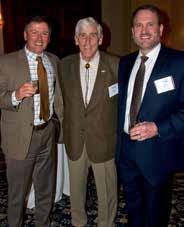


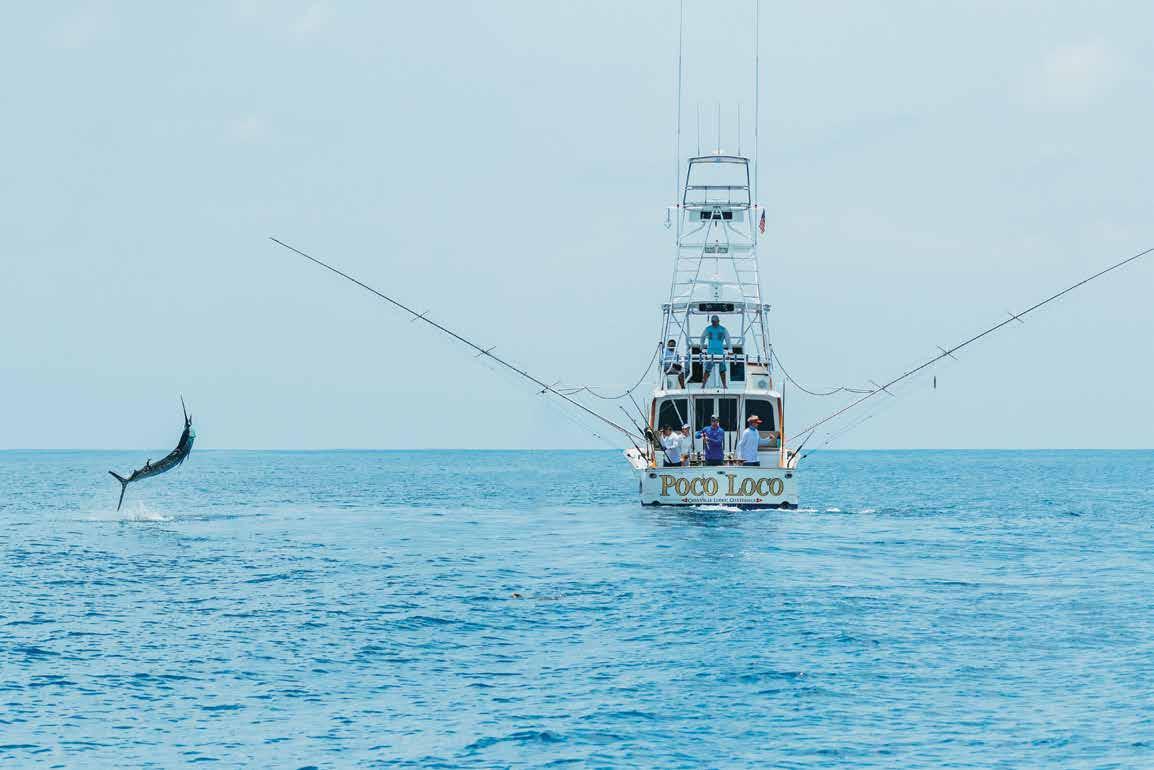


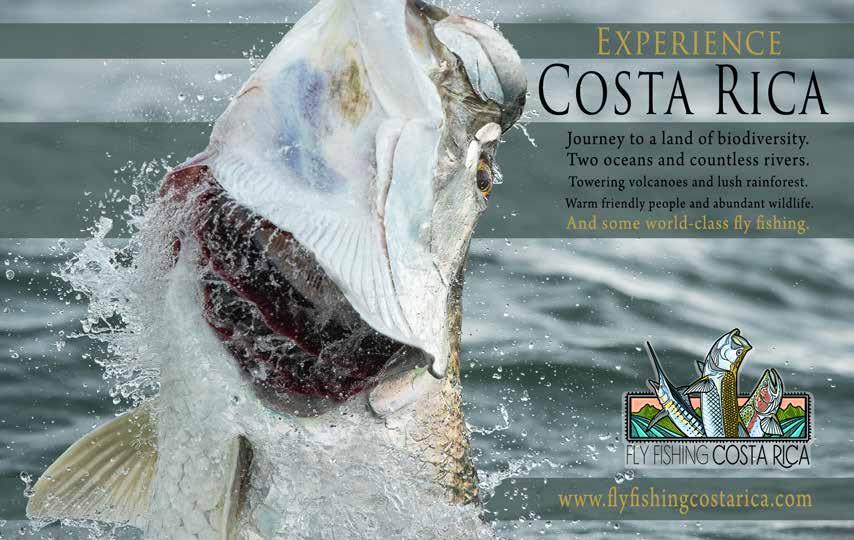


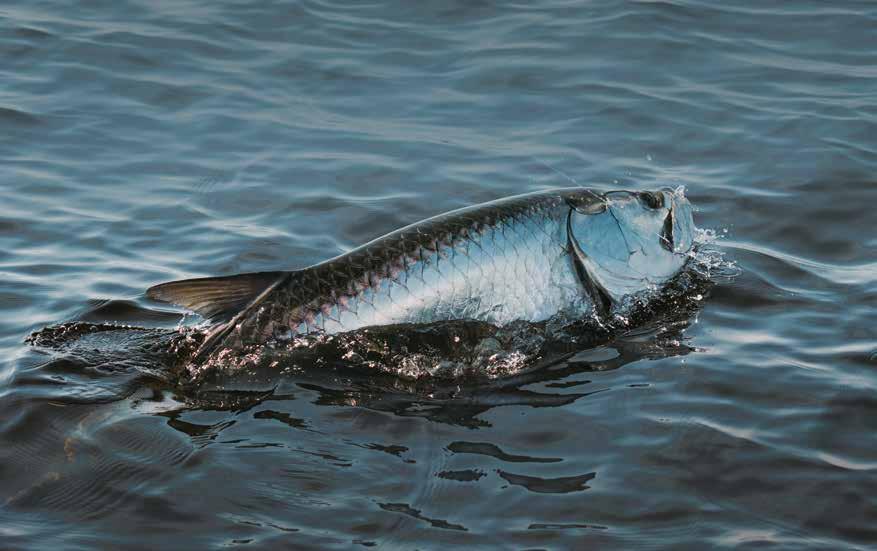
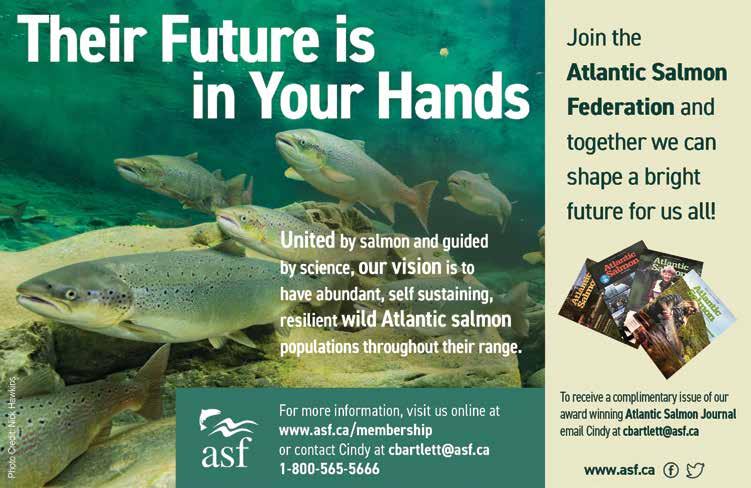
Accepting Quality Consignments for THE SPORTING SALE

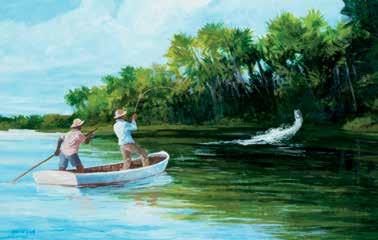


JULY 2023



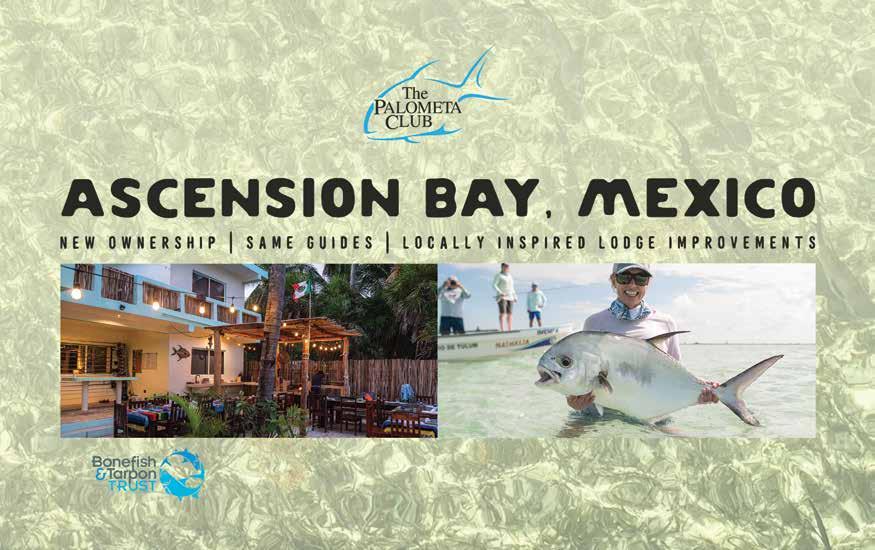









Northern Trust is proud to support Bonefish & Tarpon Trust. For more than 130 years, we’ve been meeting our clients’ financial needs while nurturing a culture of caring and a commitment to invest in the communities we serve. Because you can’t grow without conservation.

Alexander Adams President of South Florida 600 Brickell Avenue Miami, FL 33131 apa1@ntrs.com; 305 789 1336 northerntrust.com
Moglia Family Foundation
Mostyn Foundation Inc.
John Newman
David Nichols
$100,000+
Bass Pro Shops
G. Unger Vetlesen Foundation
Christopher Galvin
Moore Bahamas Foundation
National Fish and Wildlife Foundation
Ocean Reef Conservation Association
Paul Tudor Jones
$50,000-$99,999
Evan Carruthers
Costa
McKenzie Foundation
Palmerstone Charitable Fund
Robert Galvin Foundation
Robertson Foundation
The James Family Charitable Foundation
$25,000-$49,999
Bill Ackman
Andrew Tucker
Hewitt Family Foundation
Bur Oak Foundation
Beat Cabiallavetta
Casa Vieja Lodge
Davidson Family Foundation Inc.
Frederic C. Hamilton Family Foundation
Good Shepherd Fund Ima-Main
Josh Gruss
Guides Trust Foundation
Andrew Horowitz
Hamilton James
The Nancy Dunlap and John D. Johns Charitable Fund
Gerold Klauer
Lower Keys Guides Association
Carl Navarre
Pipe Dreams
Searle Family Trust
Andrea Tese
Dianne and Daniel Vapnek Family Fund
Ward Woods
Roger Waters
Yeti Coolers
$10,000-$24,999
Kelley Armour
Adam Beshara
Blue Safari
Pete Buck
Burke Family Foundation
Adolphus Busch
D. Keith Calhoun
Danny Canale
Casa Clorinda
Christopher B. Lofgren Family Foundation
John Cochran
John Dewing
Joseph DiMenna
Joe Dorn
East End Lodge
El Pescador Lodge
Enrico Puglisi LTD
Exciting Outdoors
Bill Fajen
Fay Ranches, Inc.
Marshall Field
Russ & Christina Fisher
Flamingo Cay Club
Free Fly Fishing Company, LLC
Allen Gant
Garber Family Charitable
Tim Gardner
Glen Raven Inc
Tom & Elizabeth Grainger
Haas Outdoors, Inc.
Patrick Heeg
Wallace Henderson
J. C. Kennedy Foundation, Inc.
Christopher Jordan
Peter Kellogg
David Leishman
Lennington Family Foundation
Little Palm Island
Los Laureles Lodge
Marco Family Foundation Inc.
Maverick Boat Group
Grassy Creek
MGW Outfitters
William Michaelcheck
Jonathan Olch
Neville Orsmond
Patagonia
Adam Raleigh
Kelly Reark
Release Fly Travel
S. Kent Rockwell Foundation
Simms Fishing Products
Skoglund Legg Fund
Steele & Associates
Palometa Club
Eliot and Michel Stone
Brian Storms
The Burton Foundation
The Christine & Rodman Patton Charitable Fund
The Herndon Giving Fund
The Islands of Islamorada
The James M. and Margaret V. Stine Foundation Inc.
The Perkins Charitable Foundation
The Phil and Mary Beth Canfield Charitable Fund
The Rip & Kelly Kirby Family Fund
Tim & Karen Hixon Foundation
Steve Trippe
Will Underwood
Untamed Angling
W. August Hillenbrand Family Foundation
Tom Wagner
David Wahl
Jeanne & Michael Wyand
Waypoint Communications LLC
$2,500-$9,999
John Bartling
Robert Bencic
Russell Byers, Jr.
Richard Childress
Anthony Davino
Alexander Fallon
Atticus Fallon
Charles Hammersmith
Jon Hop
John Kobald
Kent Krebeck
Laura Kruse
Jonathan Kukk
G Thomas Lang
James Lang
Dorothea Lisenby
Steve Love
Anthony Magardino
Robert Maricich
Philip Meng
Lars Munson
Rick Murray
Clint Packo
Bennett Sapp
Jake & Laura L. Savage
Robert Seale
John Siragusa
Ann and Hamilton Sloan
Austin Stephens
Andrew Tucker
Keith Williams
Bert Scherb
John Abplanalp
Clayton Andrews
Anglers All
Lew Armistead
Christopher Atkins
Drew Bagot
Lee Bass
David & Lauren Baumstark
Greg Bauso
Carl Behnke
Michael Benedict
Edward Benford
Bobolink Foundation
Josh Brant
Bravo Financial Group
Charles Brennan
Lane Britain
Trey Brunson
Buck Family Fund of the Maine Community Foundation
Campeche Tarpon
Gregory Case
Catskill Fly fishing Center and Museum
Charles Engelhard Foundation
Tim Choate
Peter Clark
CD Clarke
John Cleghorn
Dale Clift
David Collier
Copley Fine Art Auctions
Coxe Family Fund
Cross Current
Brady Crouch
Daft Family Foundation
Joseph Davenport
Hugh Davis
Delphi Club
Paul DiMaura
Craig Donaldson
Willard Dow
Dreamcatcher Foundation, Inc.
Dudley and Constance Godfrey Foundation
David Eckroth
Ed Uihlein Family Foundation
Elm Grove Foundation
Lynn Erb
Eric Estrada
Everglades Foundation
Greg Eynon
Far Bank
Anonymous
Florida Keys Outfitters
Fly Fish Guanaja
Gene Wilson Family Fund
Blair Givens
Global Rescue LLC
Grady White Boats
Louis Hager Jr.
Henry E. & Consuelo S. Wenger Foundation
Herndon Foundation
Hetzel Family Charitable Fund
Horizon Foundation, Inc.
Hugo Hur
Patrick Hylant
Jeff S. and Jodi L. Harkavy Family Foundation
Jim and Chris Scott Family Donor Advised Fund
Jim and Jonnie Swann Corporation
Christopher Jordan
Dikran Kashkashian
Kay Fly Fishing Lodge
Ronald Kemperle
Michael Kohlsdorf
Glenn Kolker
Christopher Komanski
Chuck Koteen
KOW Steaks
Michael LeBourgeois
Loring, Wolcott & Coolidge Trust, LLC
Lovett-Woodsum Foundation, Inc
Charles Lunsford
James Lyon
Mangrove Cay Club
Hank Manley
Lee Mather
Meredith McCord
Wayne & Rebecca Meland
Arthur Mellon
Michael and Cynthia Johnson Foundation
Mikita Foundation
Rich Millar
Peter Millet
Millrace Foundation
Mitchell Family Fund
Greg Moffitt
Clay Moorhead
John Nguyen
Gary Nicklaus
William Nitchmann
Northern Trust
Old Trail Foundation
Outguided LLC
Alice Pannill
Patagonia
Patterson Family Foundation
Rick Peterson
Charles Porter
Fraser Preston
Paul Puckett
Victor Raposo
Raymond & Maria Floyd Family Foundation
David Reeves
Restore America’s Estuaries
Richard L Hirsch Charitable Fund
Mark Robinson
Romora Bay
Alan Rothschild
Rough-J-Ranch Foundation
James Ryaby
Salisbury Family Charitable Fund
Jeffrey Salzman
Sarah Watkins Trippe Rev Trust
Jeannie Schiavone
Rollin Schuster
Michael Searle
Siegler Reels
Cecil Sewell
Shade Tree Foundation
Shimano
Adam E Silverblatt
Jason Smith
Thomas Snyder
Kris Spanjian
Stamps Family Charitable Foundation
Stephen Anderson
Reg Stettinius
Bill and Nancy Stroh
Tarpon Caye Lodge
The Baltoro Trust
The Burton Foundation
The Burton Foundation
The Darrel and Dee Rolph Family Fund
The Dorsey Family Foundation
The Gilbert Verney Foundation
The Harold and Ramona Brewer Charitable Fund
The Lanning Family Fund
The Laurenti Family Charitable Trust
The Lessing Foundation
The Lewis Family Giving Fund
The Peter and Betsy Snow Fund
The Stephen and Ann Reynolds Fund
The Theo B. Bean Foundation, Inc.
The Walter V. & Judith L. Shipley Family Foundation
The Warwick Foundation
Tree Saver
Trump International Golf Club Palm Beach
Trump International Hotel Las Vegas
John Turner
Vallely Donor Advised Fund
Nishan Vartanaian
Roberta Watson
Waypoint Communications LLC
Reed Webster
L. Mark Weeks
Kerry Whitaker-Townsend
William Lewis
William W. Rowley Donor Fund at The Cleveland Foundation
David Wirth
Leonard Wood
Alexander Woodruff
Wyoming Whiskey
Yellow Dog Flyfishing Adventures
Stephen Zoukis
$1,500-$2,499
Francis Abbott
Chris Antinori
Tom Barranco
Timothy Benitz
Chris Bensen
Dan & Aimee Berger
Scott Bloom
Ivar Bolander
Frank Bowen
Peter Bray
Harrison Buck
Martin Butler
Brian Connell
David Creed
Anthony Cummings
Raymond Dorado
Shawn Ellis
Michael Farr
Richard Finlon
Mary-Therese Fiorentini
Richard Fulton
Frank Giacobbe
Andrew Gnazzo
James Graninger
Henry Hagan
Paul Hagen
Walter Hajduk
Calvert “Barry” Hall
Ian Harris
Carol Lynn & David Higley
William Horn
Doug Hynden
Matt Joyce
Chris Keller
Matthew Kellogg
Richard Kracum
Nathaniel Kramer
Bob Kuppenheimer
Guy Laframboise
James Larkin
Robert Lewis
Jeremy Loercher
Todd Lunstead
Louise Mauran
Sean McCarthy
Dennis McConnell
Theodore McGraw
Mark McKinney
Ford McTee
Walter Meier
John Mengel
Thomas Merrick
Andy Mill
Curtis Mills
John Moritz
Street Nalley
Michael Neal
Rob Neher
Etienne Neubeiser
Andre Nieuwenhuizen
Arthur Niles
Paul O’Hara
Richard Oliver
Todd Peter
David Pollack
Philip Powers
Frances Purnell
Brad Quinn
Robert Rohn
William Rose
Peter Schiff
Fred Schulte
Nicholas Selch
Edward Shugrue
Sam and Beth Smith
James Sollecito
John Stewart
Andrew Tipler
Don Turcke
William Tweardy
Chris Terri Walker
Glenn Warren
David Wiener
Melody Wilson
Karen Wolfe
Lloyd & Rae Wruble
Albert C. Cattel Donor Advised Fund
Andrew Sabin Family Foundation
Richard Andrews
David Barnes
Barton and Betsy Goodwin Charitable Fund
Baterbys
Greg & Elizabeth Beldock
Rodney Berens
Betty & David Schneider Foundation
Bill and Martha McLaughlin Family Foundation
Thomas Bishop
Boca Grande Charities, Inc.
Bote Board
James Brownlie
William Budd
Patrick Callan
Sam Cannon
Scott Cassity
James Chadwick
Scott and Kelly Christian
Tracey Clarke
Robert Cobb
Cal Collier
Congressional Sportsmen’s Foundation
Robert Constable
Copley Fine Art Auctions
Michael Corbat
Robert Cornell
Cortland Line Company
Markward Family Fund
Deke and Hope Welles Fund
David Demarest
Paul Dixon
Donald C. McGraw Foundation/Black Rock Foundation
Charles Duncan
John Embleton
Eric W. Roberts Fund
Paul Fitzgerald
Florida International University
David Fleig
M Briggs Forelli
Jan Forszpaniak
Foschini Family Foundation
Frank and Patti Foster Fund
Bill Frazier
Michael Gasparian
Gerry Charitable Fund
John Gill
Geoff Gilley
Gilroy Family Foundation
Stuart Goode
James Greene
Laurence Hall
Russell Hamman
John Heagy
Dwight Hilson
John & Jody Hilton
William Hinkebein
Charles Hinnant
Patrick Holder Jr
J.P. “Gator” Wilson Family Foundation 2
Jim and Judy Wall Charity Fund
John And Patricia Finan Fund
Michael Jones
John Jordan
Aaron Kennon
John Killian
Bill Klyn
Laura Kracum
Kramer Family Trust
Peter Lasusa
Laurie Andrews and Perk Perkins Fund
Linville Family Foundation
Kevin Ludwig
Lydia Preisler Shorenstein Donor Advised Fund
Ian Markstein
Lawrence Marsiello
Martin Andersen-Gracia Andersen Foundation, Inc.
George Matelich
John McColskey
Melinda and David Mooney Charitable Fund
Gary Merriman
Miami Foundation
Micro World LLC
Mark Mohr
Joe Moose
H. Morley
MSB Cockayne Fund
Nautilus Reels
Alan Bongiovanni
Oakpool
Anonymous
On the Fly Skiff Company
Orvis
Papa’s Pilar
Peil Charitable Trust
Peter S Corbin Charitable Fund
Polk Brothers Foundation
Travis Pritchett
Steve Ramsey
Paul Reeder
Represent Your Water Reservations.com
Robert Bainbridge Donor Advised Fund
Roberts Family Foundation
Joseph Sambuco
Scott Fly Rods
SEBA Fund
Robert Sewell
Casey Sheahan
Marc Slagel
Scott Slappey
James Smith
Bailey Sory
Carl Sparks
Charles Spottswood
Steve Stanley
J. R. Steinbauer
Mark Stokes
Bill Sullivan
Susman and Donald Asher Foundation
Nathan Swenson
Scott Tenney
The Ed Chiles Charitable Fund
The Forrest Family Charitable Fund
The Shana Alexander Charitable Foundation
The Sonny Culp Family Fund
The Vandeventer Foundation
Thomas D. Terry and Sue A. Conatser Giving Fund
Benjamin Trevor
Turner Family Fund
Paul Vahldiek
Will Vallely
VYUHA INC
Joseph Webster
Patricia Eileen Webster
Robert Wells
Adam Welsch
George Steven white
Whitney/Mulligan Foundation
David Winch
Will Wingate
Ronald Winters
Mark Wisbeski
Joan Wulff





When you travel, anything can happen. When it does, Global Rescue gets you home.
most trusted travel services provider for anglers and adventurers worldwide.



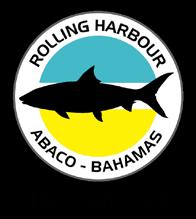

Congratulations to the winners of the FISHWATER CUP FISHWATER CUP benefitting the Bonefish and Tarpon Trust
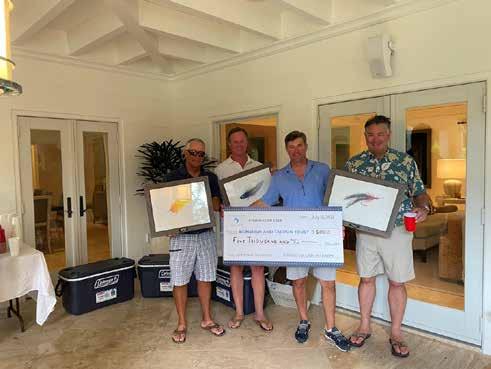
BOCA GRANDE, FL BOCA GRANDE, FL



JULY 11-13, 2022
JULY 11-13, 2022


ANGLERS: PATRICK WATERHOUSE AND TODD SNIDOW

ANGLERS: PATRICK AND TODD SNIDOW GUIDE: LEO HENRIQUES GUIDE: LEO HENRIQUES






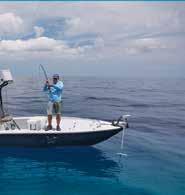

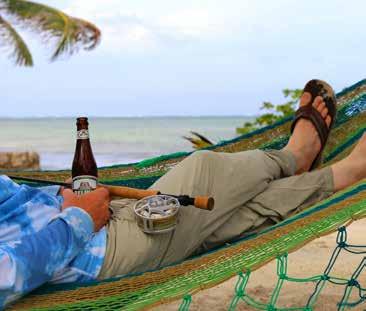









a call to action to help ground it, volupta tquoditatis et, consen. We could put a little











JUST RELEASED


MORE FIGHT, MORE TOUCH
Load shifted closer to the hand prioritizes feel and recovery. 25% greater strength for increased pulling power.

The Hardy Zane Pro. Crafted Performance. Premier Precision. HardyFishing.com















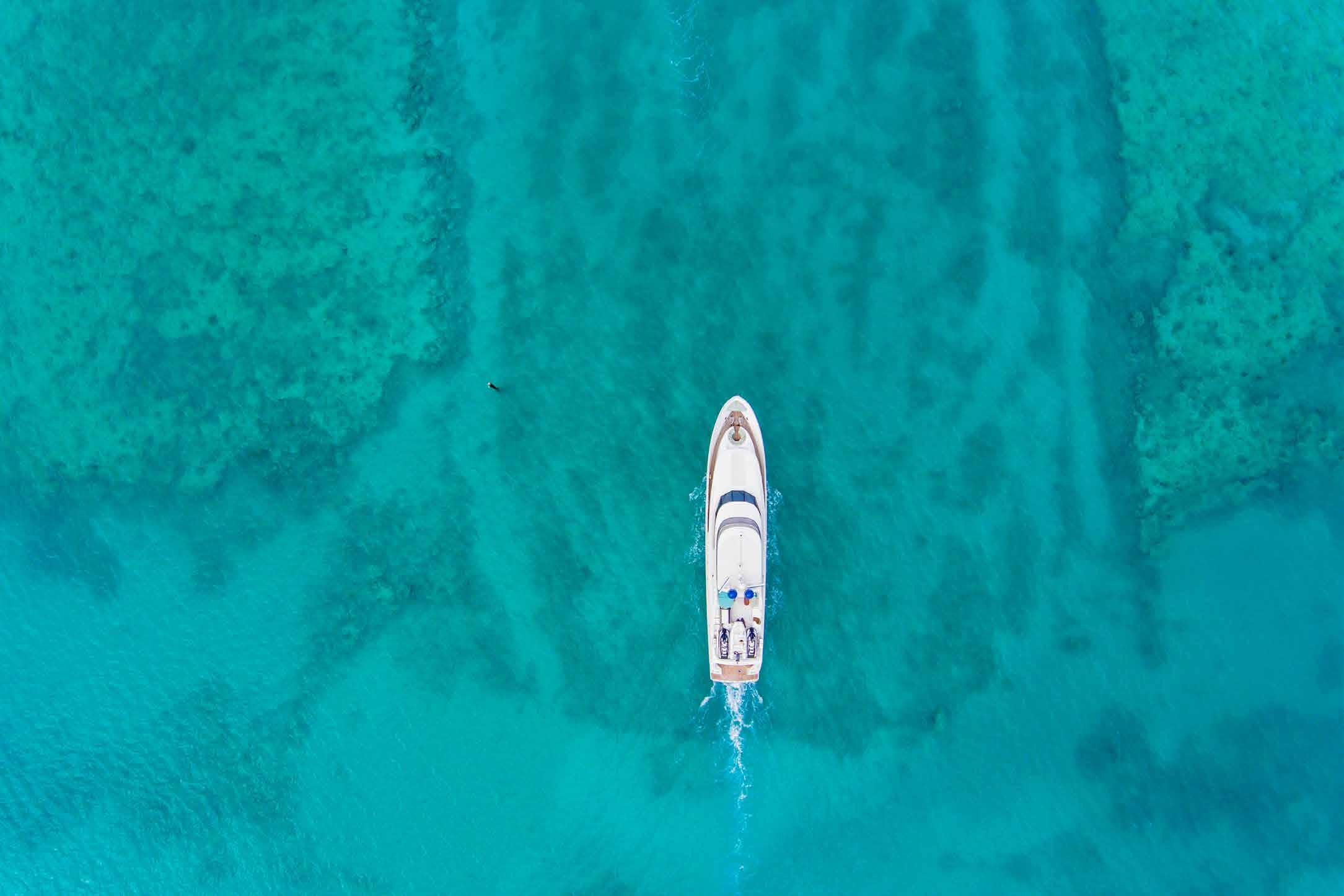

decade ago, the Indian River Lagoon was known as the most diverse saltwater estuary in North America with lush seagrass meadows, miles of mangrove shoreline and roughly a quarter of the state’s salt marshes. These days, it resembles more of a blotchy, barren moonscape.
This 156-mile stretch of coastal waterway between Ponce Inlet and Jupiter Inlet on Florida’s eastern coastline has been in cascading decline because of two major factors: poor water quality and major habitat loss—both leading to decline of the lagoon’s marine life and gamefish populations. The welldocumented seagrass loss in the Indian River Lagoon is directly related to the multi-faceted water quality issues that include high volume freshwater runoff, nutrient and sediment pollution, and green and brown algae blooms. Unfortunately, different segments of the lagoon suffer from their own unique water quality issues which require site-specific remedies.
On the southern end of the lagoon in Stuart, discharges from Lake Okeechobee spill into the St. Lucie River via a man-made connection, carrying nutrient-laden fresh water into the river. These discharges may last months at a time and, at times, turn the brackish estuary completely fresh, destroying the saltwater dependent marine life in its wake. Farther north, where the river bisects the Banana River and Mosquito Lagoon, coastal runoff and aging septic tanks load nutirents into the system, exacerbating both green and brown algae blooms. These blooms, which seem to be increasing in volume and frequency, are decimating the marine ecosystem in the upper lagoon.
Fortunately, there are solutions in the works for the runoff and nutrient issues in the form of Everglades Restoration through the Comprehensive Everglades Restoration Plan, accelerated sewer system updates through state-funded grants, and a new $100 million Indian River Lagoon Protection Program announced by Governor Ron DeSantis in Executive Order 23-06. While those projects are underway and being planned at the state and federal levels, the Florida Fish and Wildlife Conservation Commission (FWC) has adapted its management strategies to include aggressive regional management of existing marine life and habitat into an overall restoration plan for the lagoon while helping fight destructive development practices.
The mainland and barrier island that border shorelines of the lagoon host a tangled series of marshes known locally as “mosquito impoundments.” Many are still being utilized for mosquito control, but some have been sealed off from tidal flow over the last couple of decades. These mangrove-lined marshes are slowly being reconnected and opened to tidal influence through a series of culverts and pump houses, creating a myriad of brackish habitats for juvenile tarpon, snook, crabs, mullet and killifish.
Other good examples are shifts from a one-size-fits-all statewide fisheries management towards regional fisheries management that includes allowing the state to monitor fish populations and create protective measures in areas that are most impacted by the habitat loss or decline in fisheries. That strategy works both ways, as areas that have increased fish populations are now allowed longer seasons or increased bag limits.
Since around 2011, FWC has used regional management rules on snook, redfish and seatrout to address declines in populations attributed to overfishing and natural disasters like cold weather and red tides. It wasn’t until recently that more emphasis was
placed on water quality and overall habitat loss.
To accomplish its mission, FWC relied heavily on scientific research as well as public input to determine the underlying issues in each region. FWC did this by holding a series of public meetings and symposia designed to gather scientists, fishing guides and anglers in one room to review the science on the health of each fishery. Through public comment at the Snook, Spotted Seatrout and Redfish Symposia, FWC scientists learned about regional issues that may not have been exposed in sustainability studies, while at the same time learning if their data on the health of each species matched what the watermen were seeing. From there, FWC was able to gauge whether the regions needed more attention and possible species protection.
As the science and public testimony merged and potential trouble spots were identified, FWC began a deep dive into the problem areas, eventually opting to adjust regional rules that address not just the overall fish populations, but also water quality and habitat decline in those areas. This management shift allows FWC to get out in front of declining fish populations before the fisheries collapse and be in a position to rebuild them as the habitat and water quality issues improve.
The most recent rule changes involve redfish, a highly targeted gamefish in just about every region of the state, but a species that was severely impacted in the Indian River Lagoon by oxygenstarving algae blooms and loss of viable habitat, particularly seagrass. Through stakeholder feedback and on-the-water creel studies, FWC opted to close all harvest of redfish in the Indian River Lagoon until further notice.
FWC’s focus on habitat reflects the regional issues that may impact different fisheries. At the same time, the lagoon needs aggressive protection of the remaining naturally occurring habitat and restoration of degraded habitat, with a spotlight on addressing water quality issues. Coastal development in the forms of seawall, dock, and marina construction and channel dredging need to fall under a “zero natural habitat” impact restriction. Slowly chipping away at what available natural habitat is left for new development is a “death by a thousand cuts” mentality that negates the recovery progress and will eventually overwhelm the marine life of the lagoon.
A good example is the proposed Seagrass Mitigation Bank Legislation. In the last two years, the state has been approached with political bills to create Seagrass Mitigation Banks which in theory would allow developers to destroy current seagrass beds for construction of marinas and docks, and then pay to have grass replanted in another area. The bills have been shot down, but shouldn’t even be entertained as an option, given the low success rate and the decreased density and long-term sustainability of planted areas compared to natural seagrass beds.
The climate is changing, as are the ways we determine the health of our marine ecosystems around the state, but through shifts in fisheries management that take these evolving issues into consideration, FWC and the State of Florida are improving the way we manage our fisheries and putting significant effort and funding into addressing the long-standing issues facing the lagoon under the umbrella of the newly created Indian River Lagoon Protection Program. These changes will serve to ensure that fish populations can reestablish themselves as the conditions improve over time.
Partners In Preserving The Fish And The Places They Roam.



